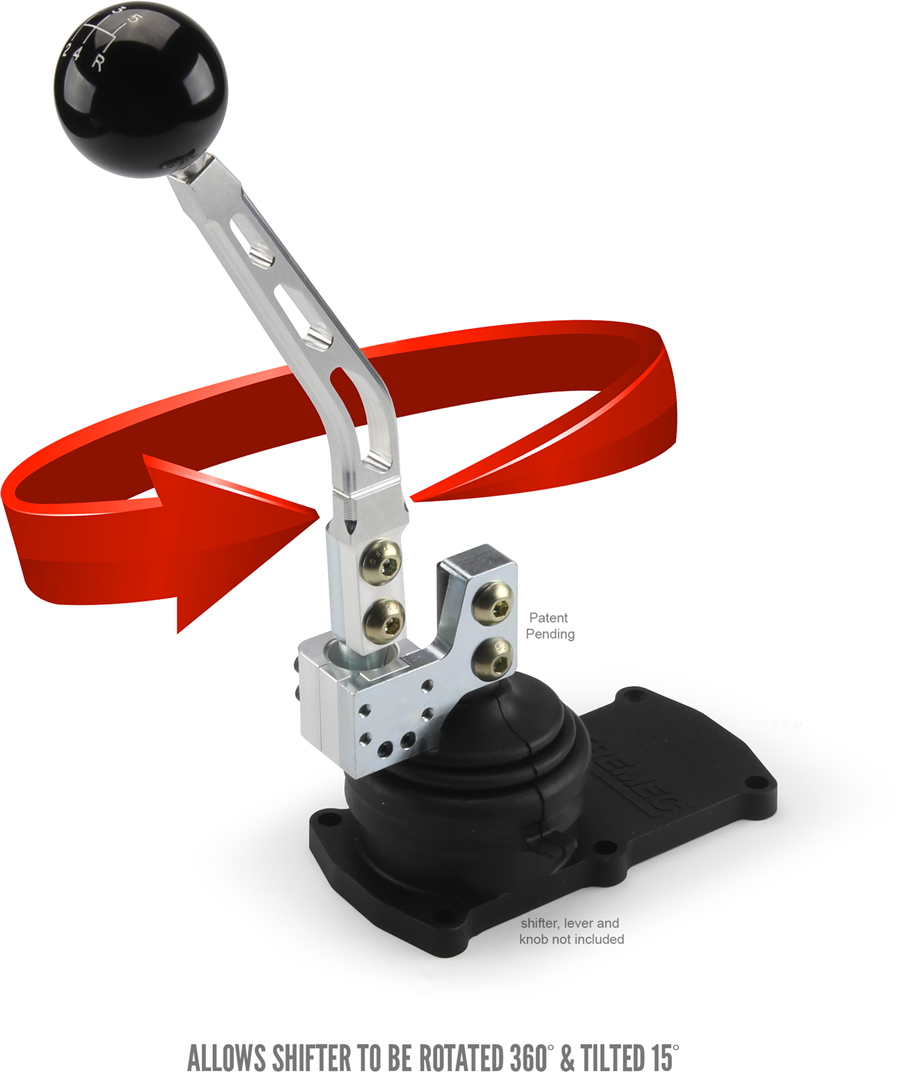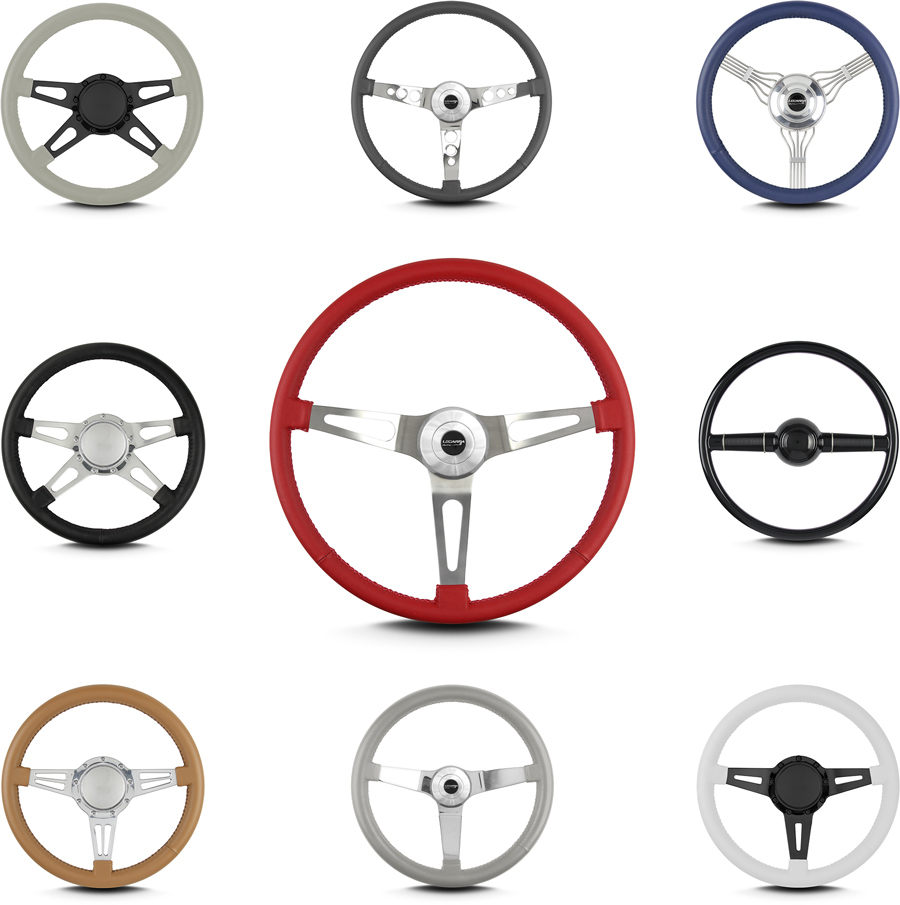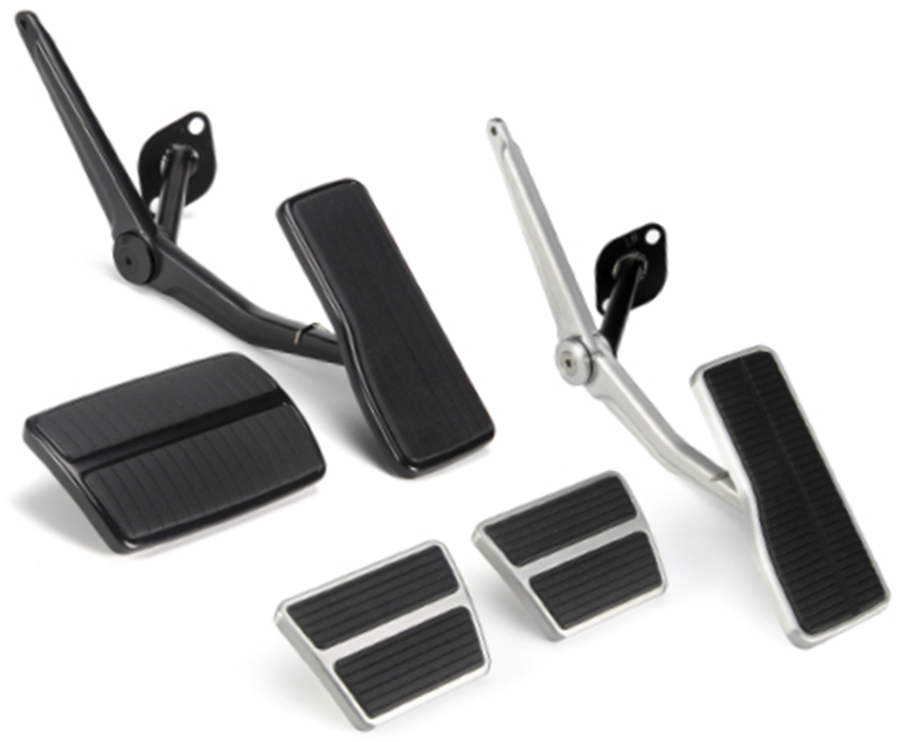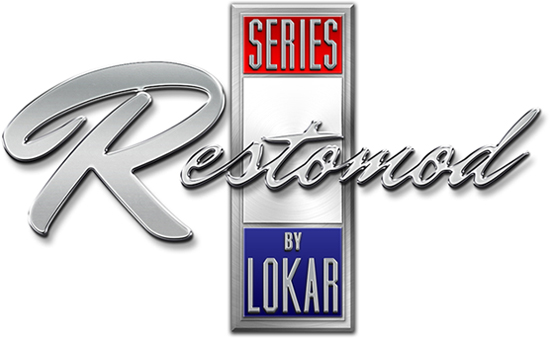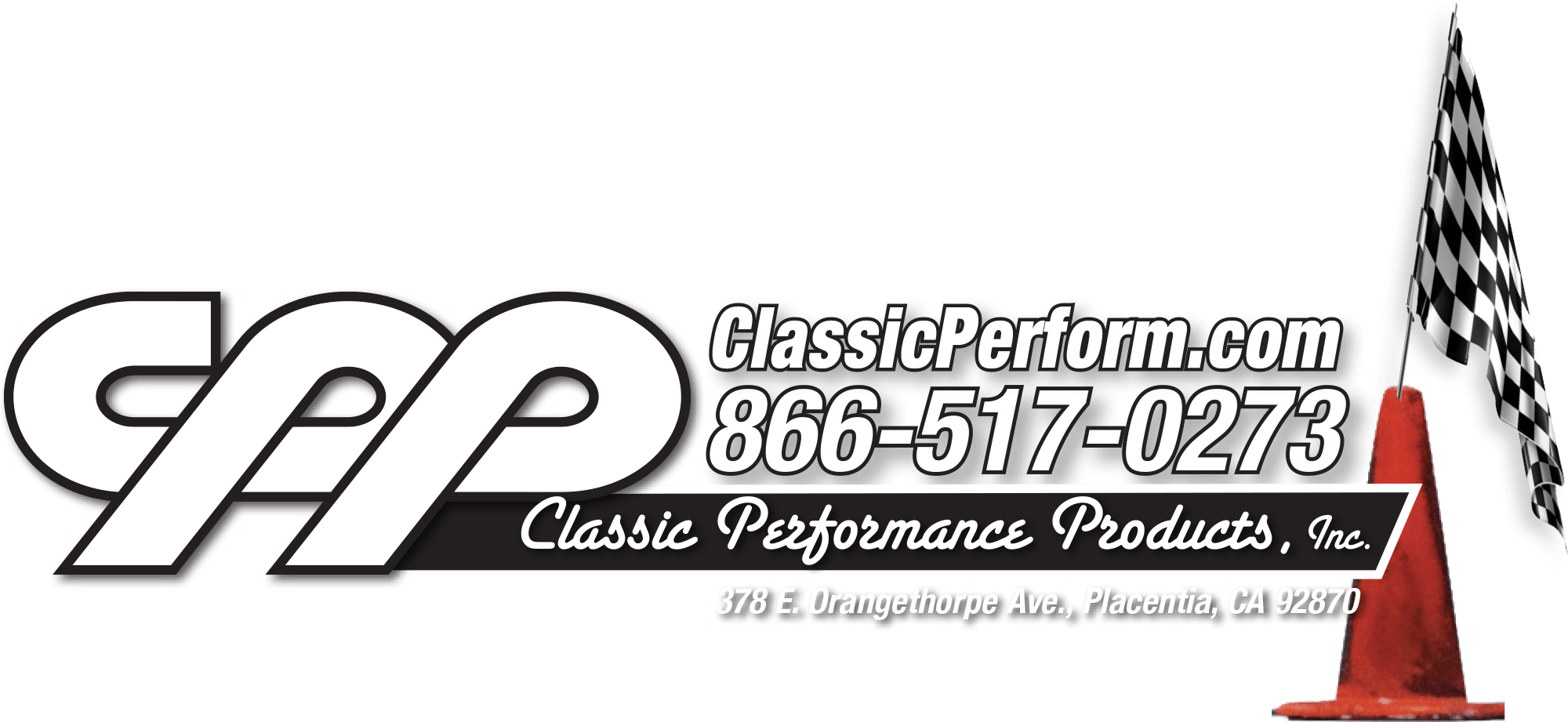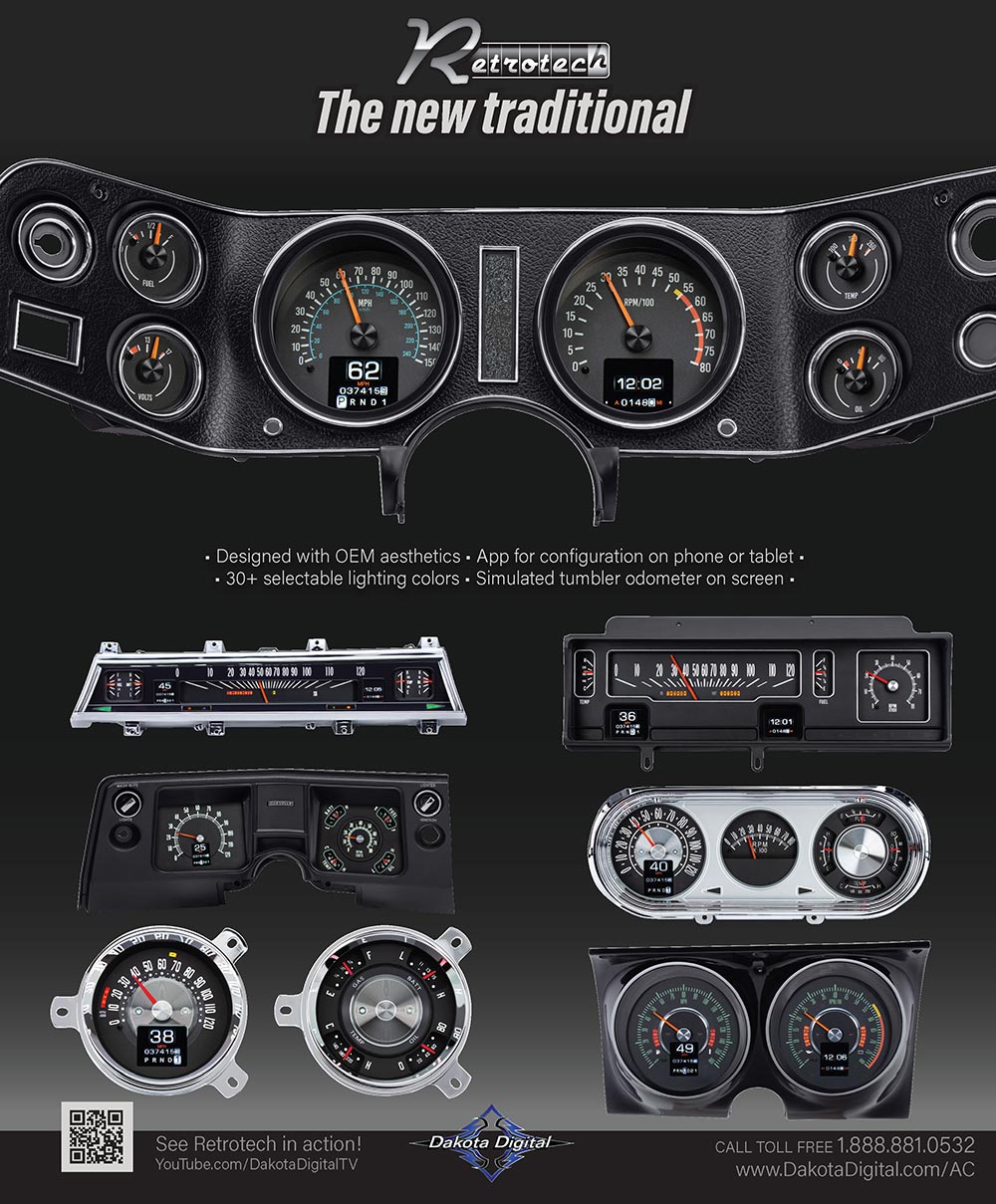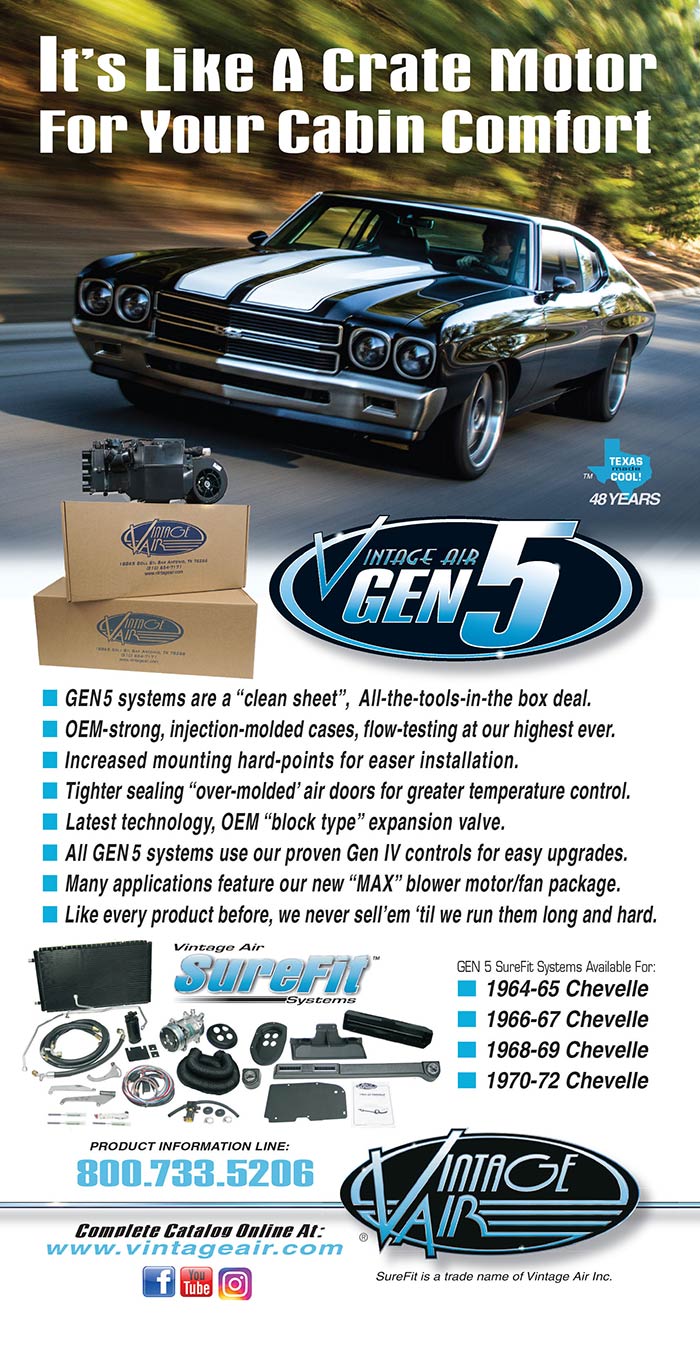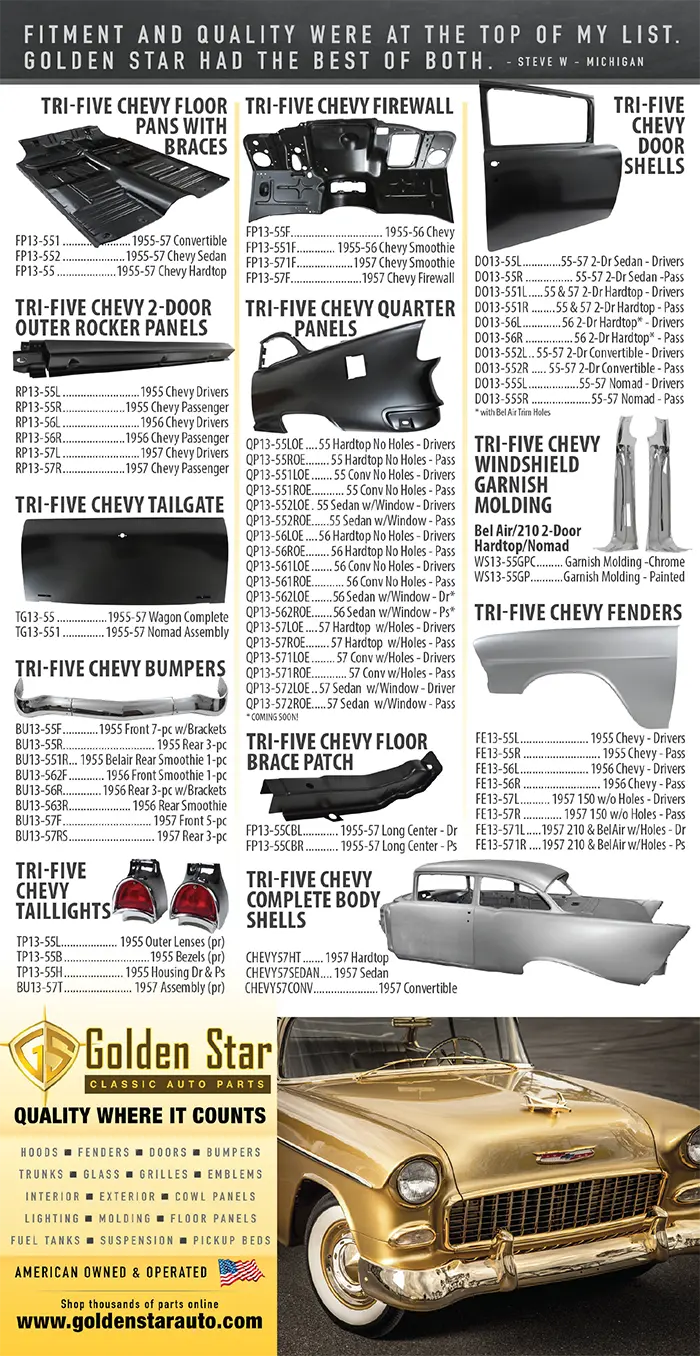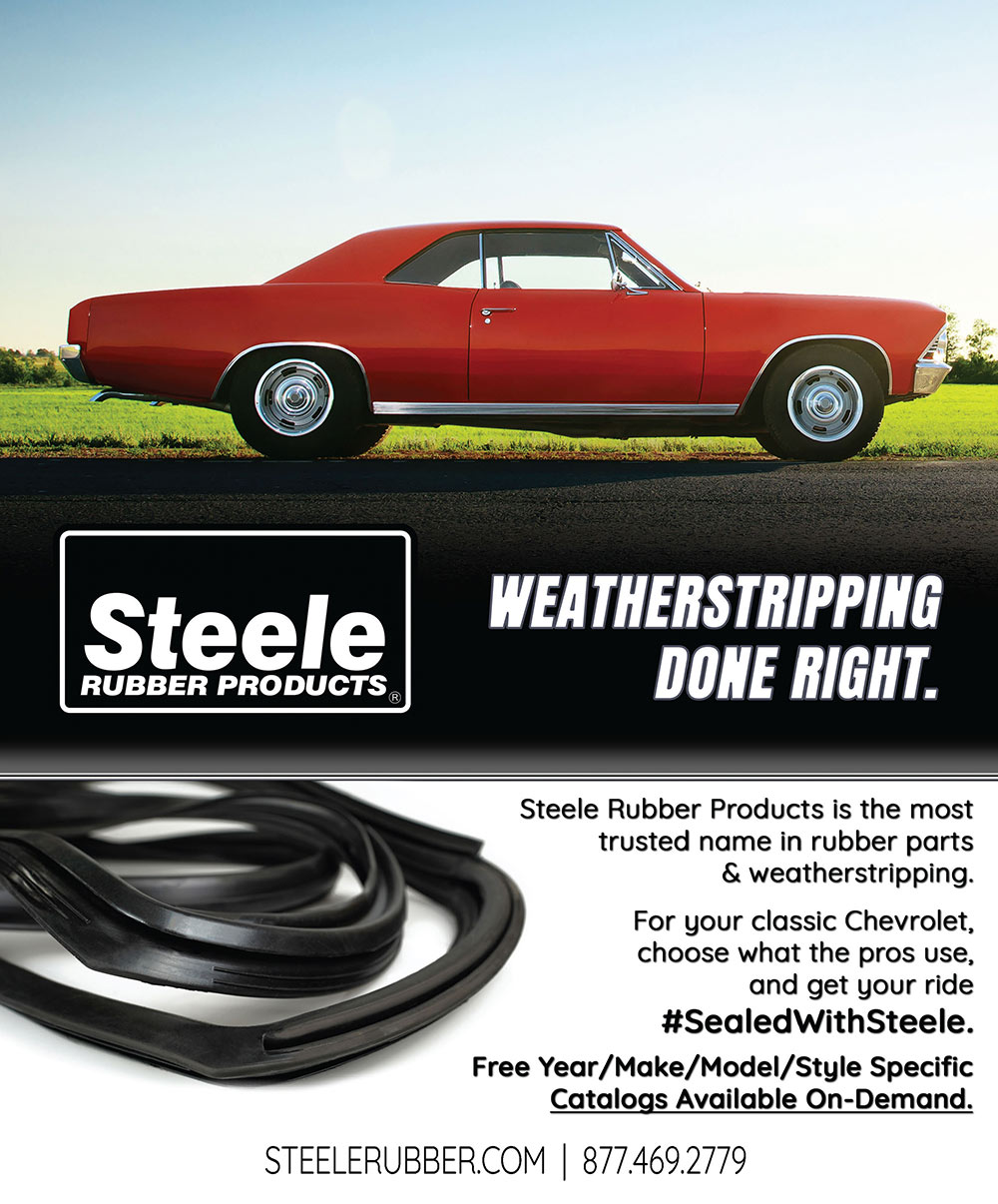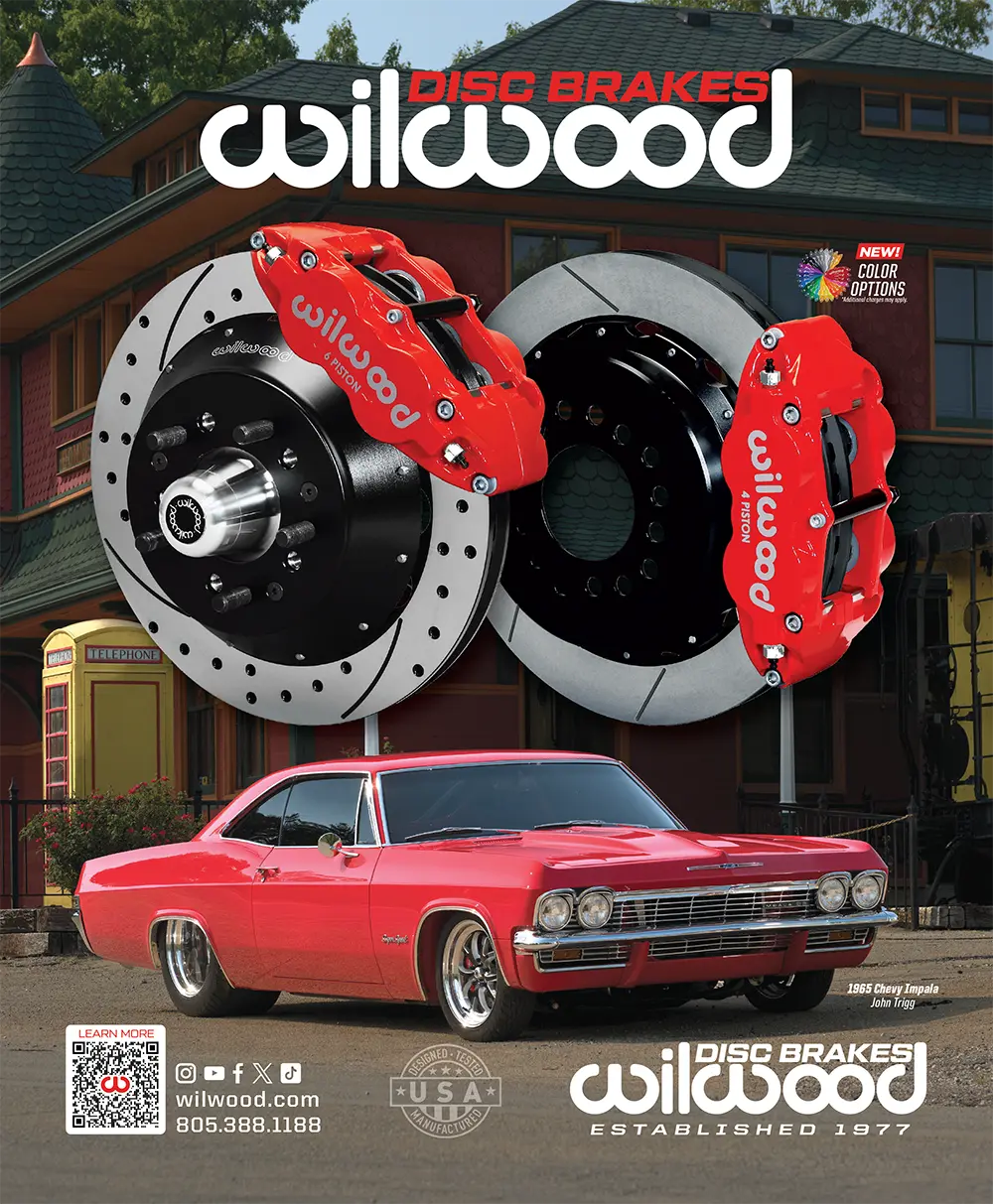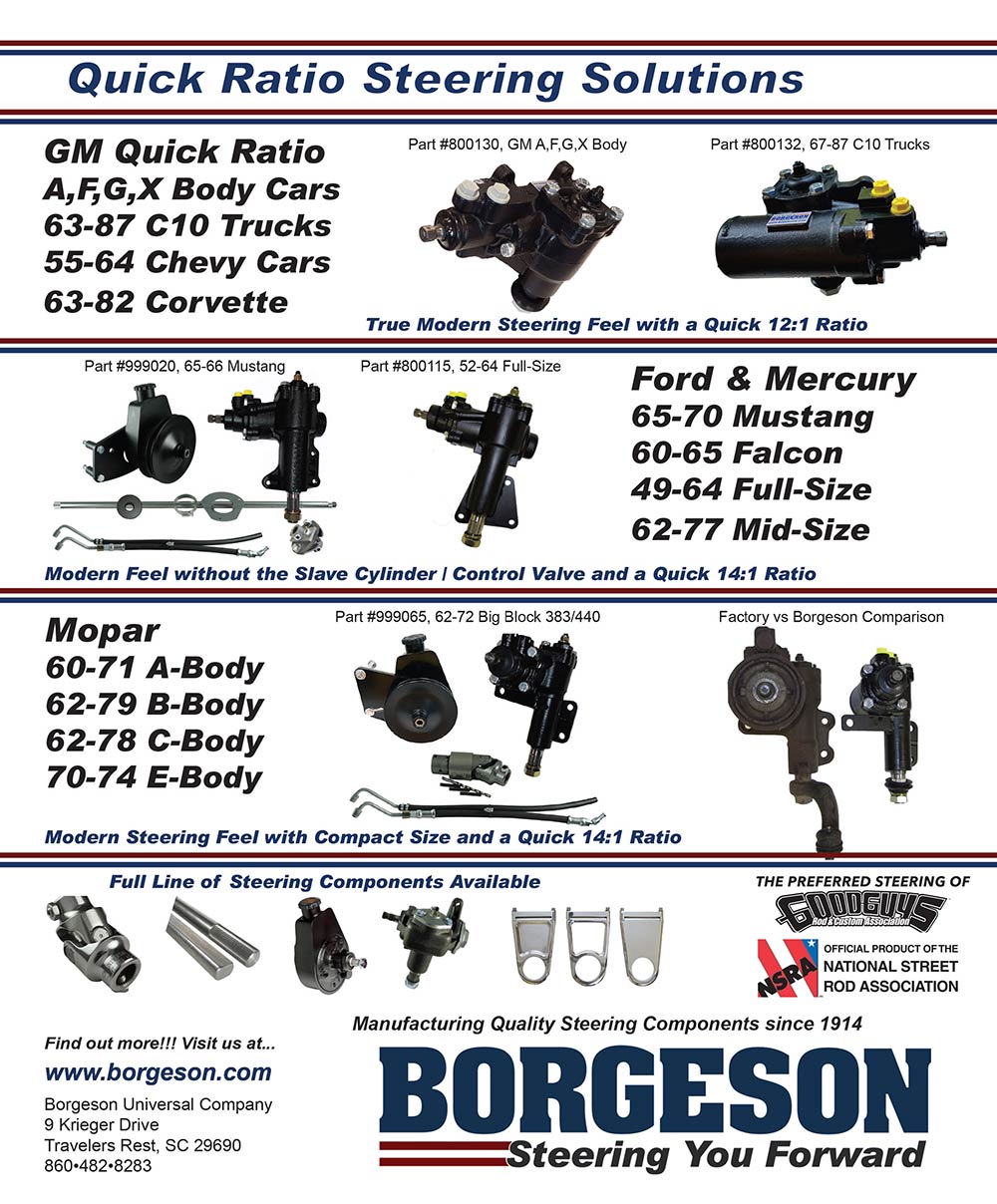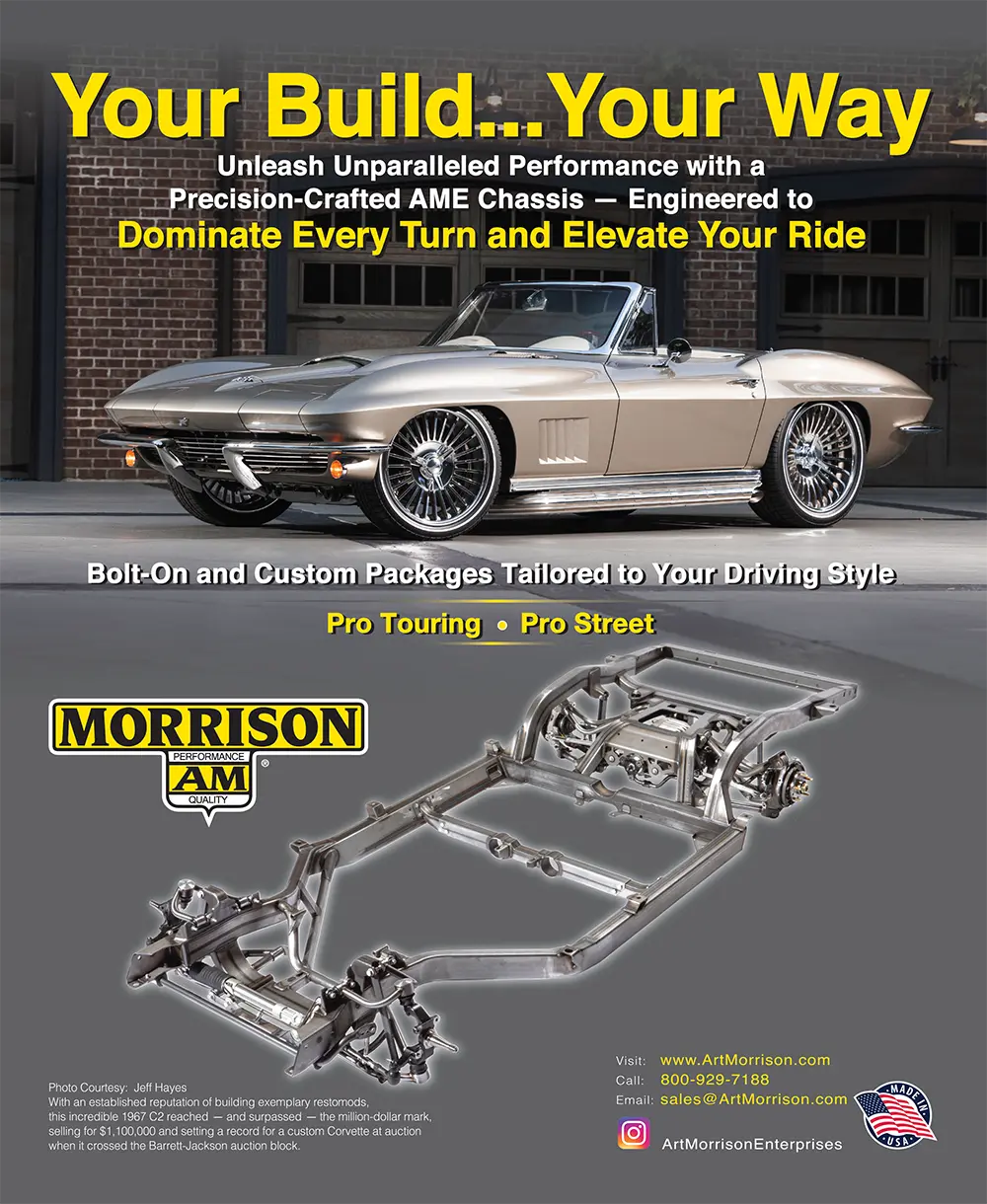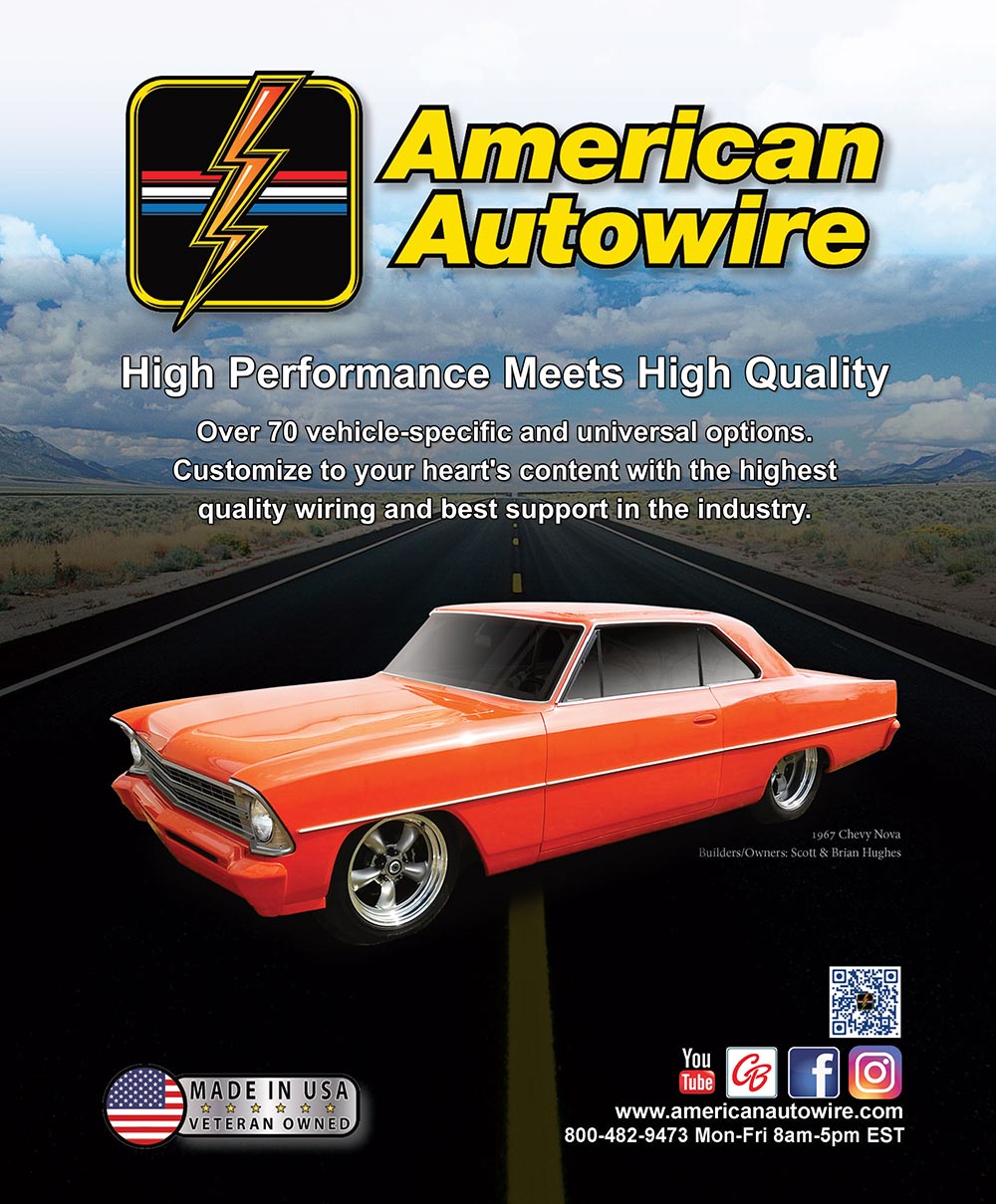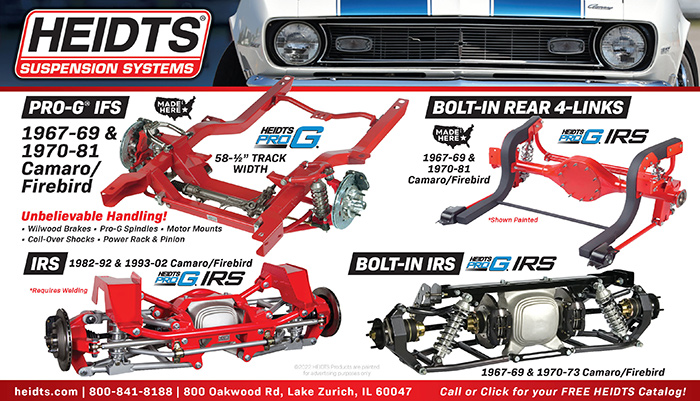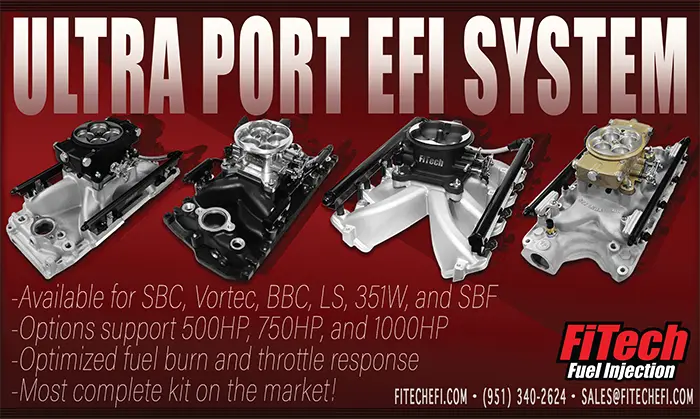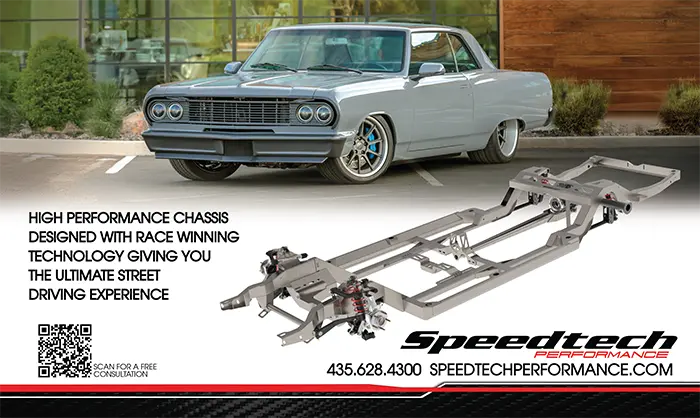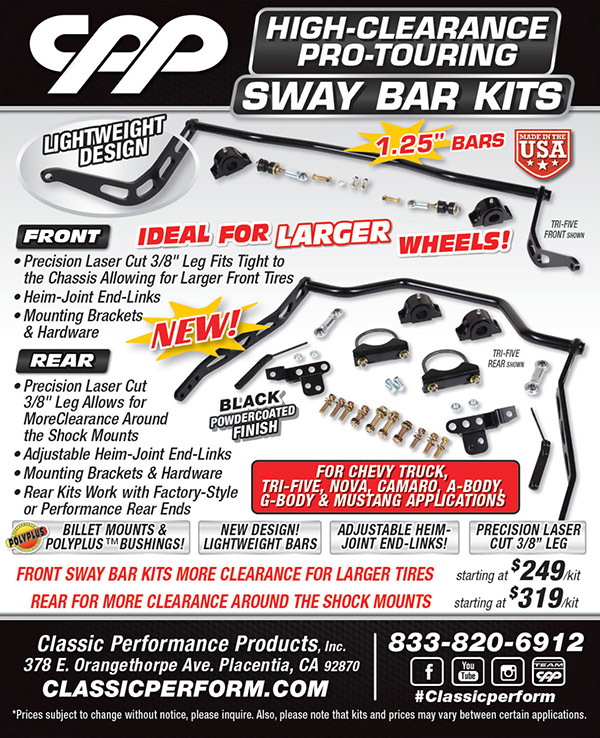 TOC
TOC



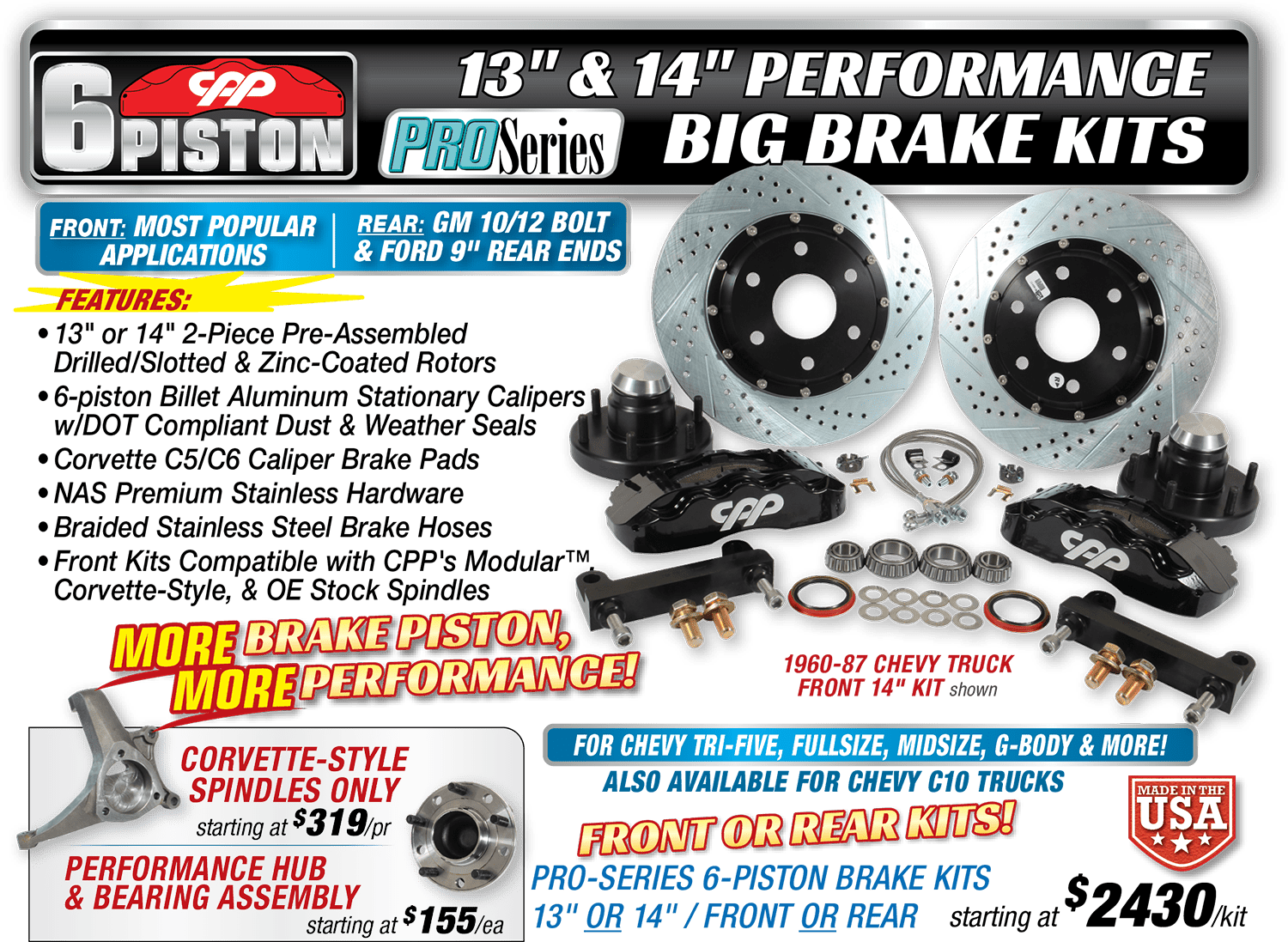
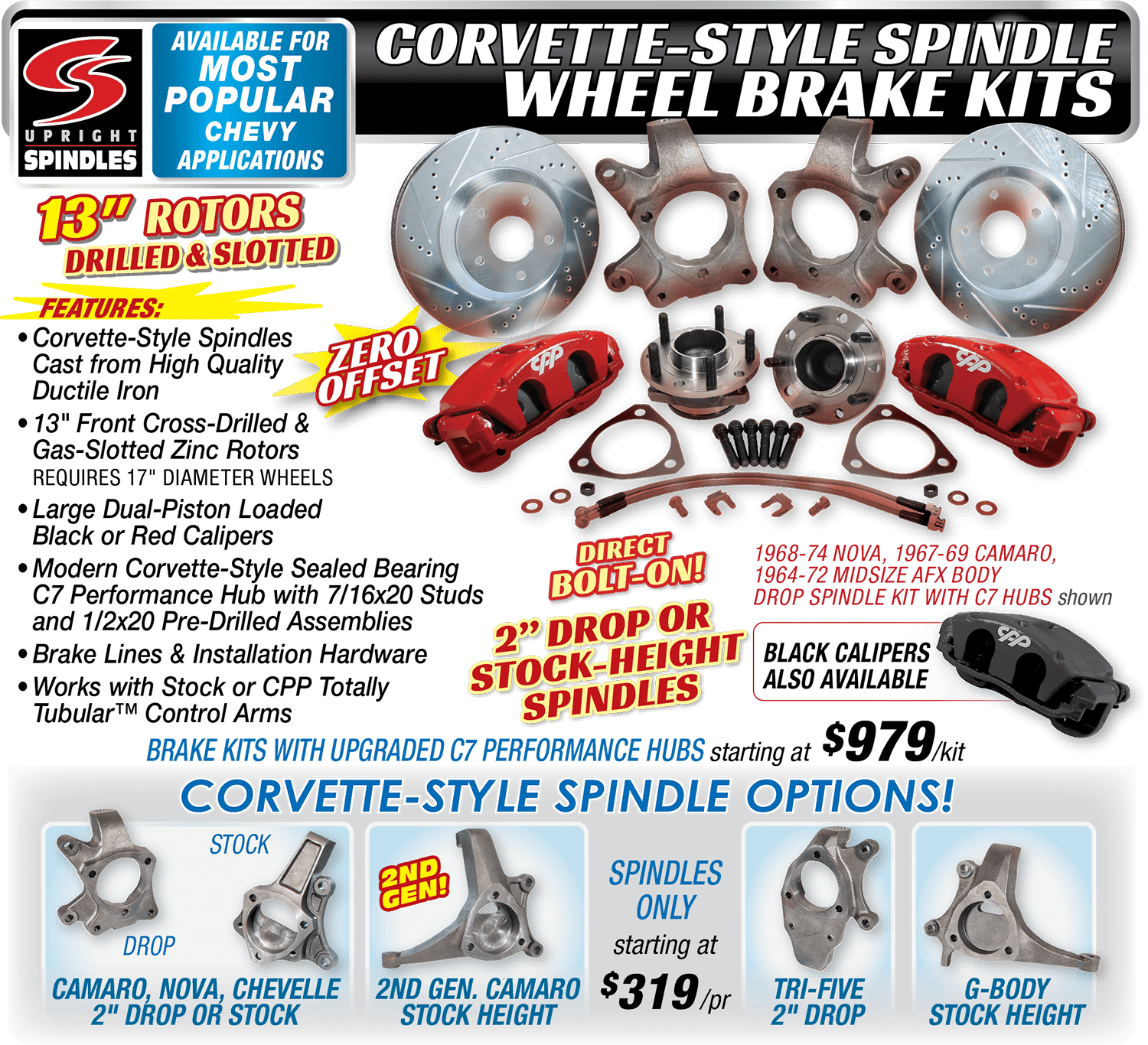
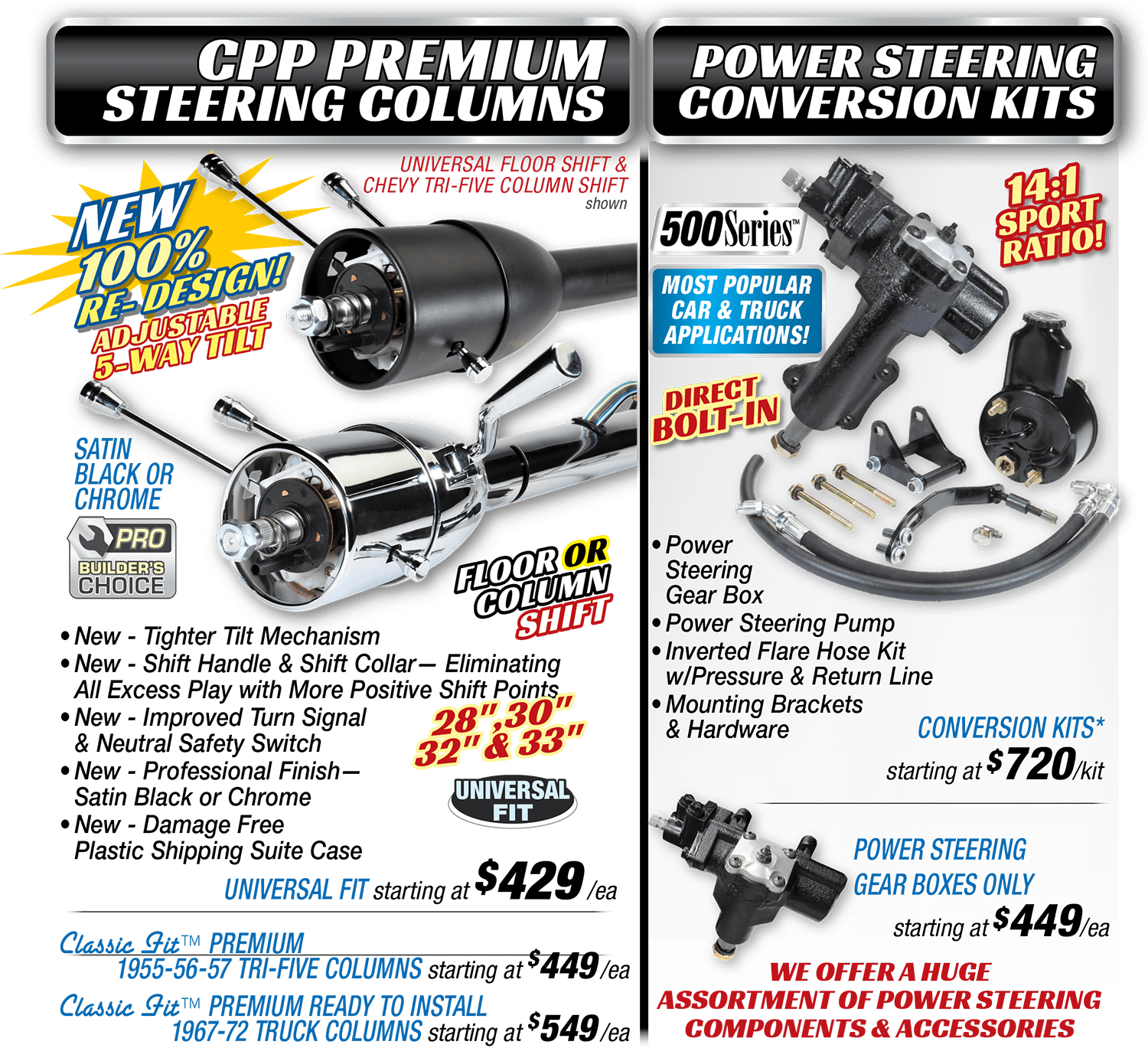
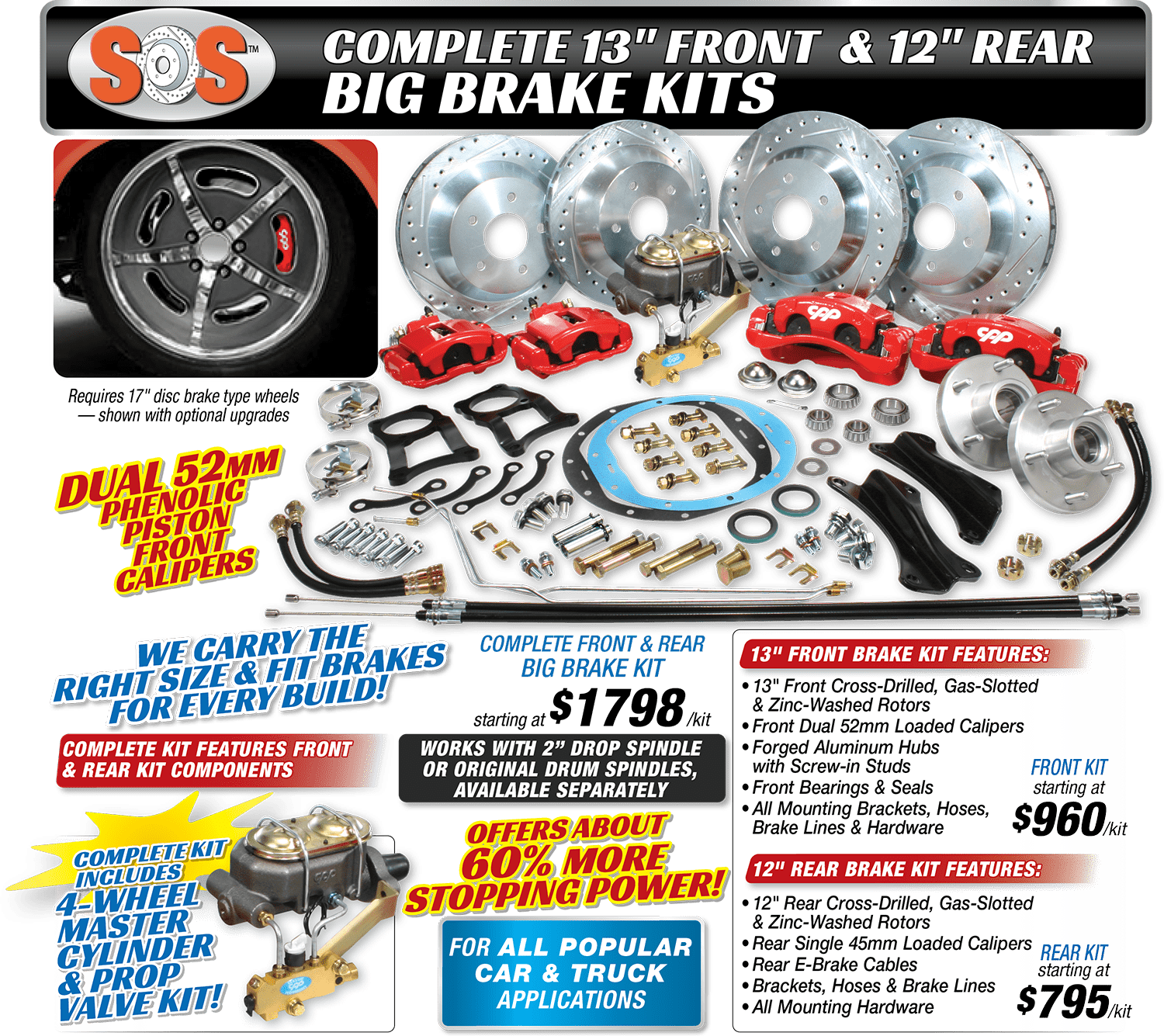
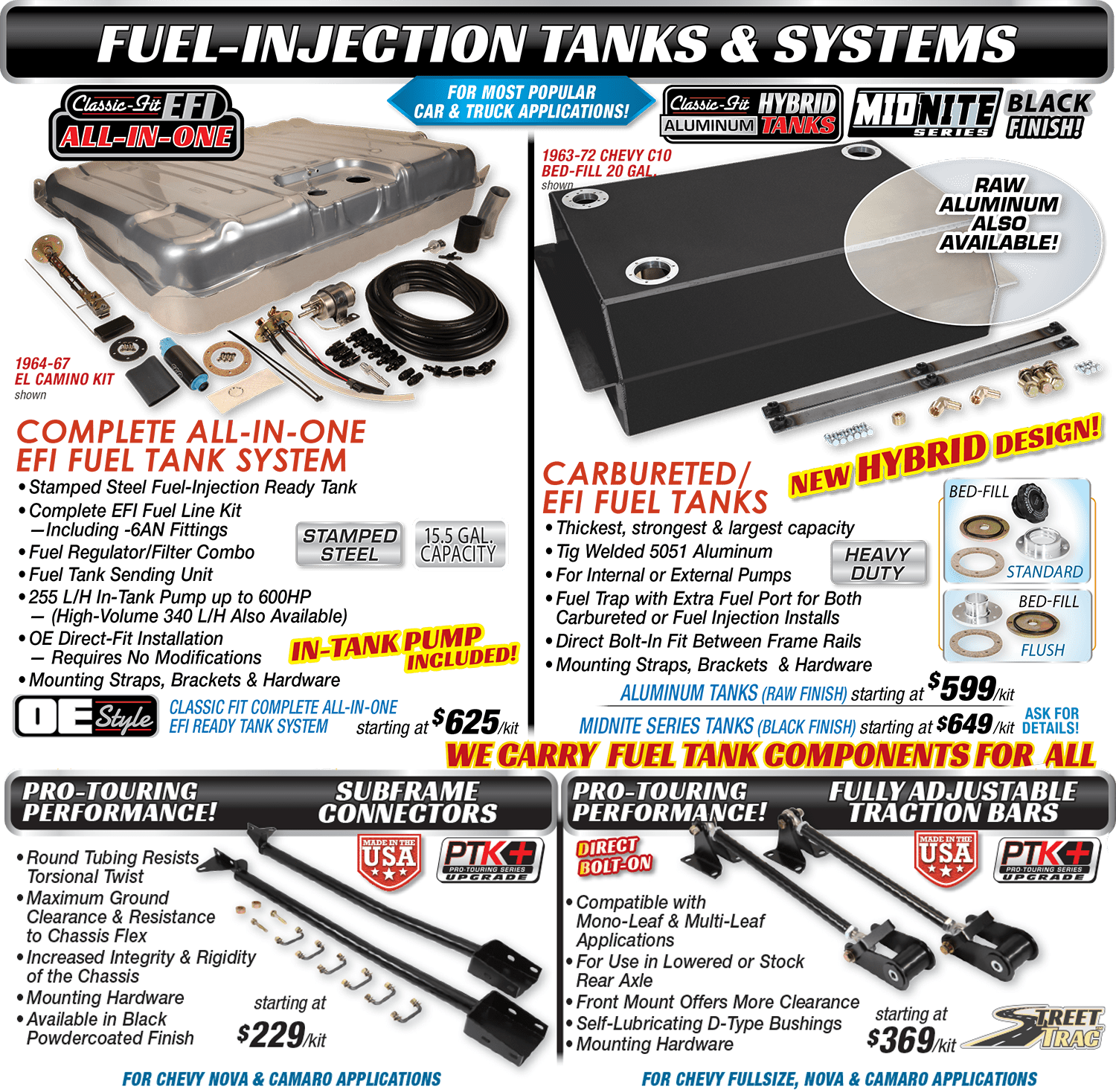

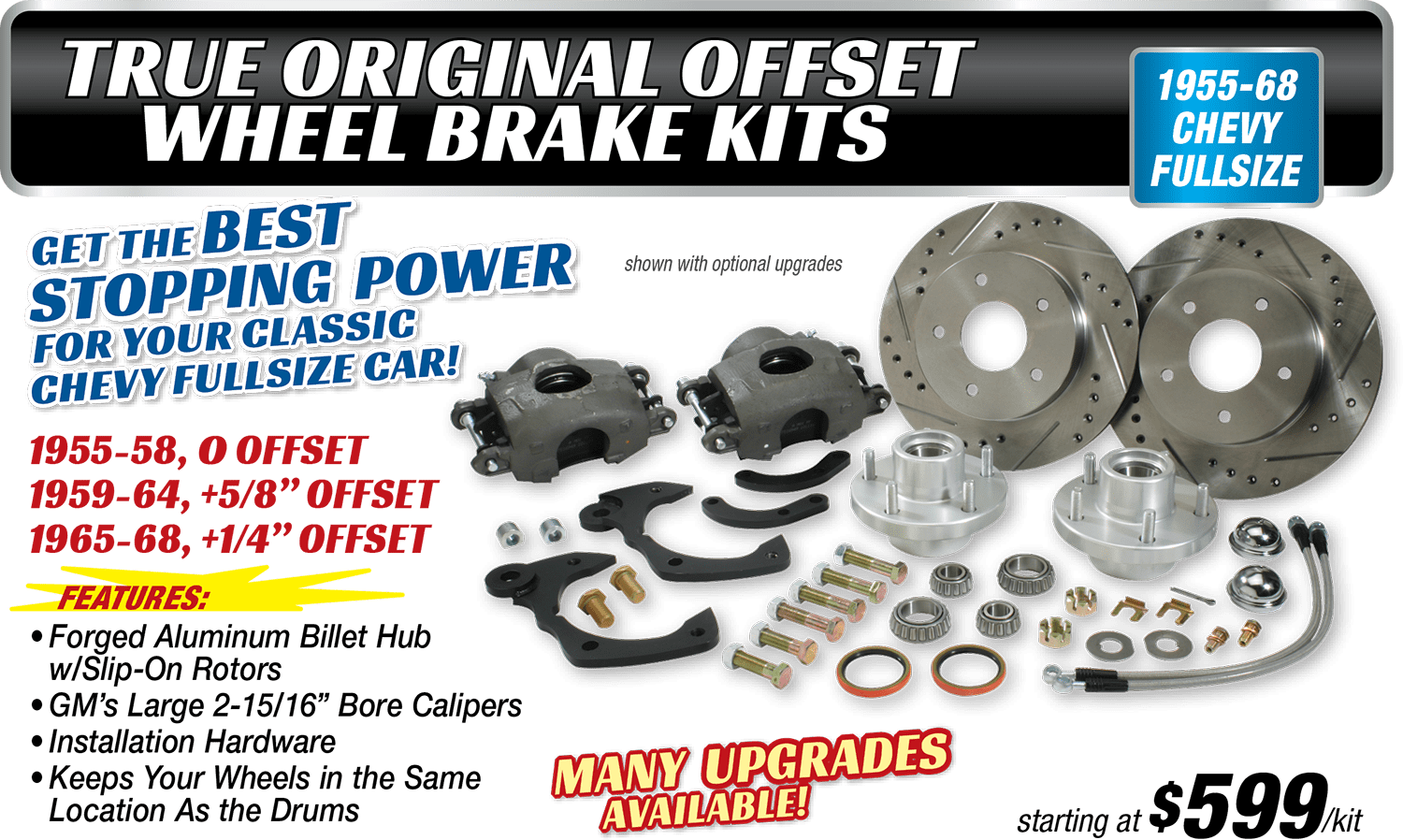
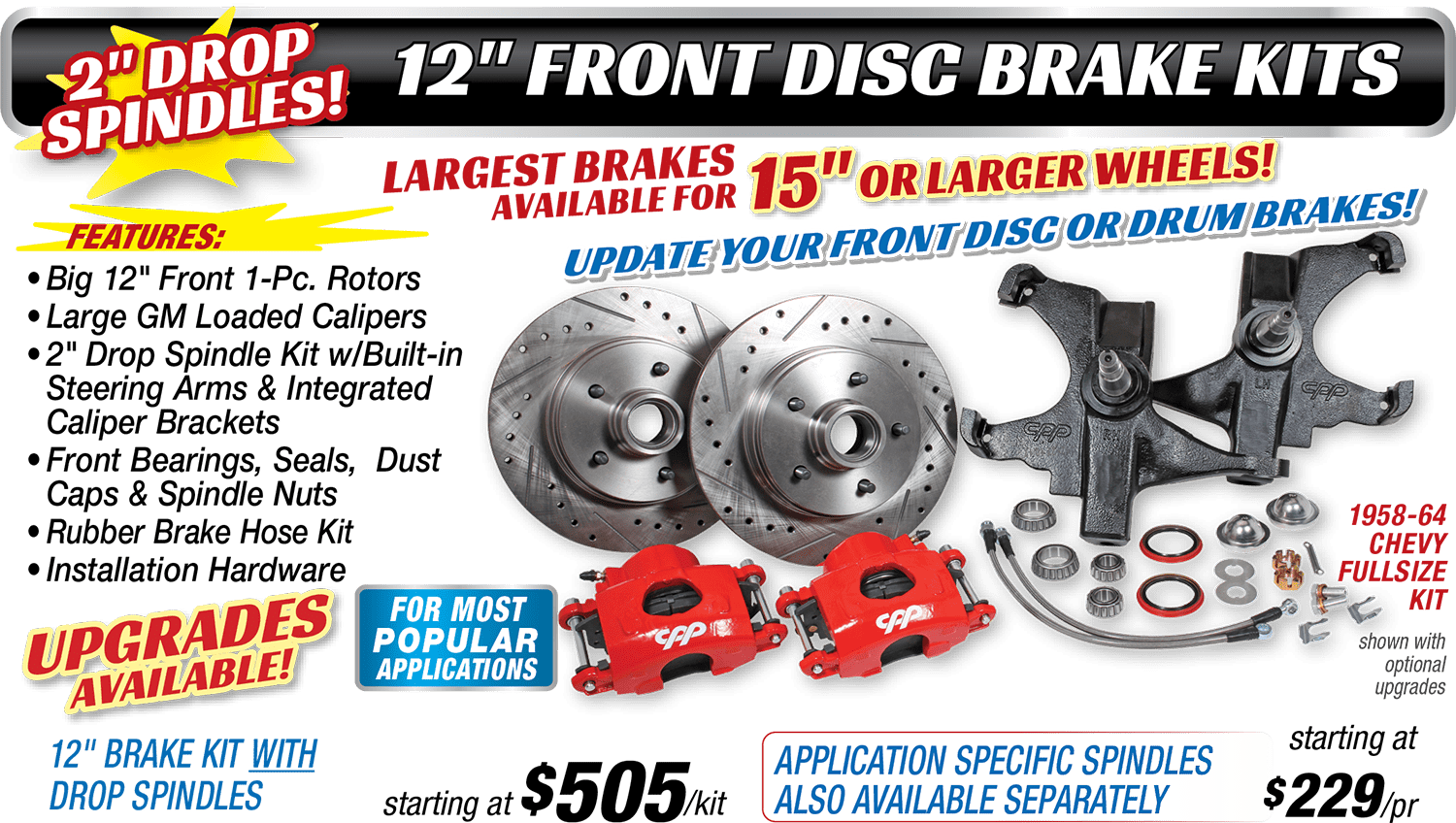
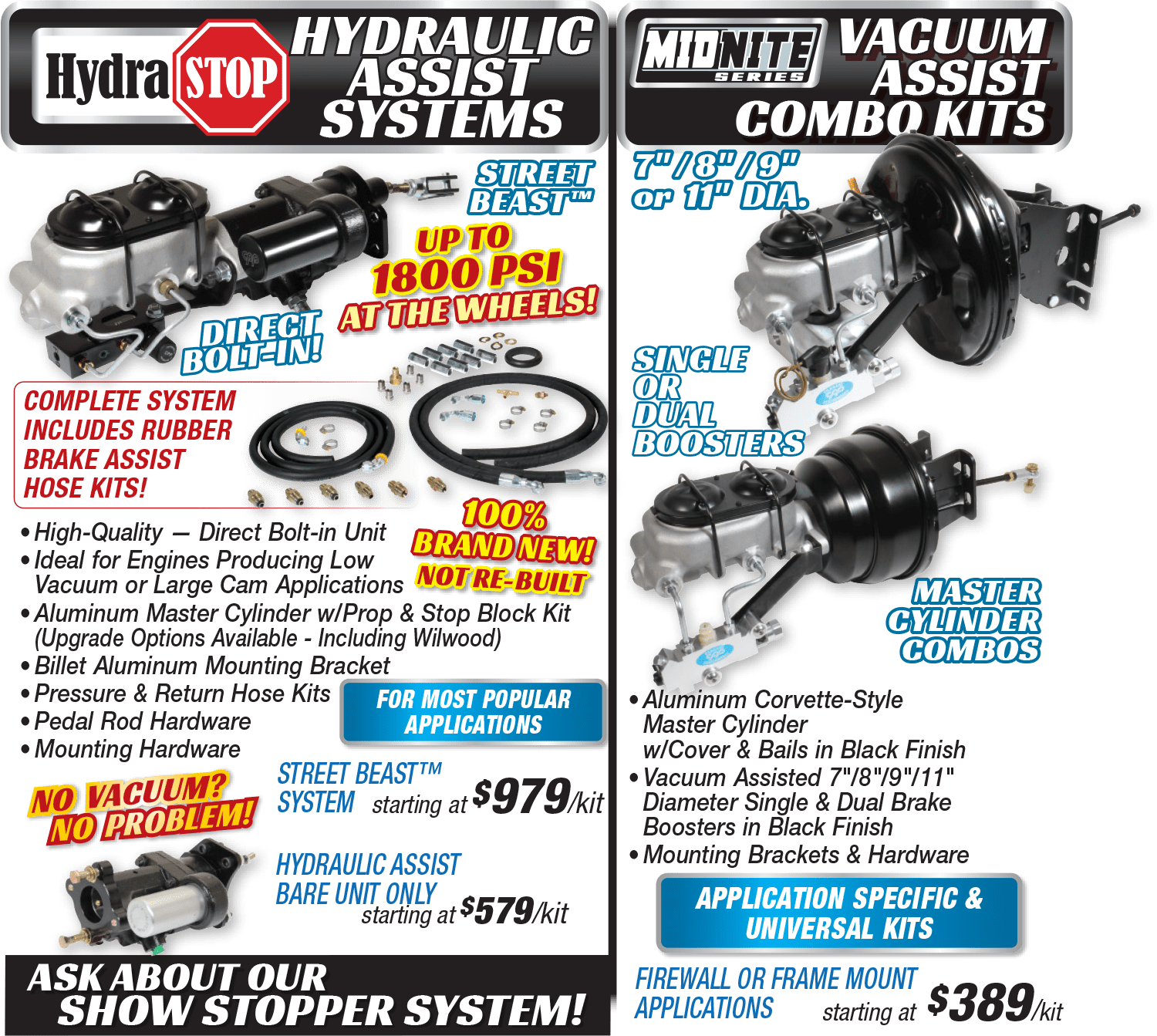
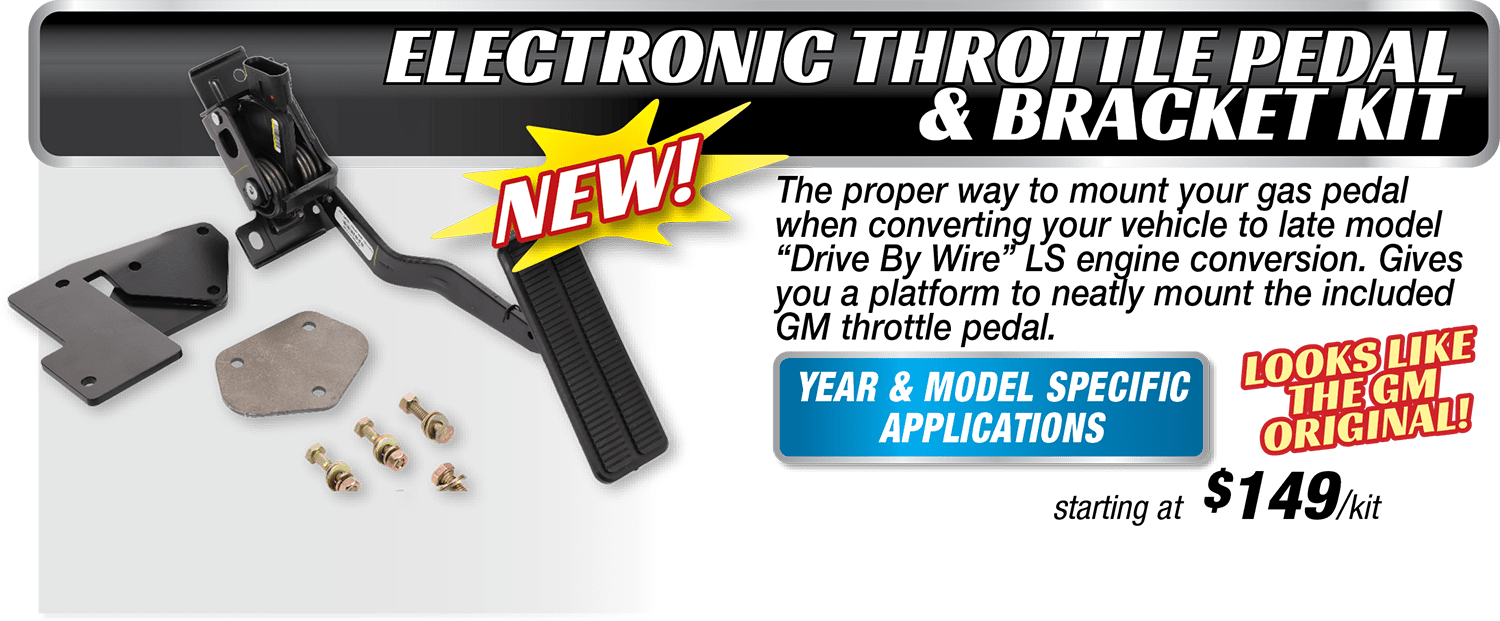
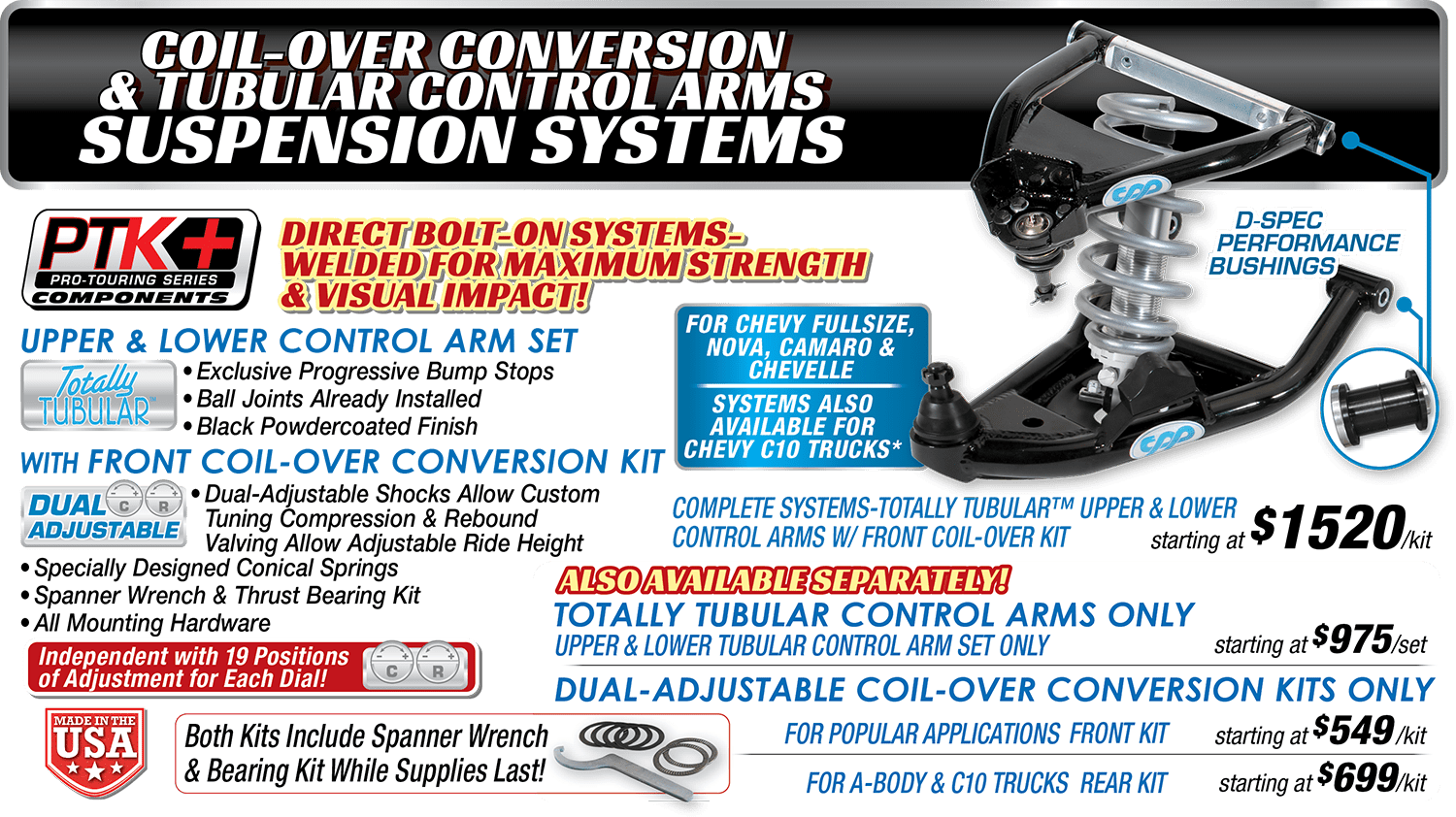
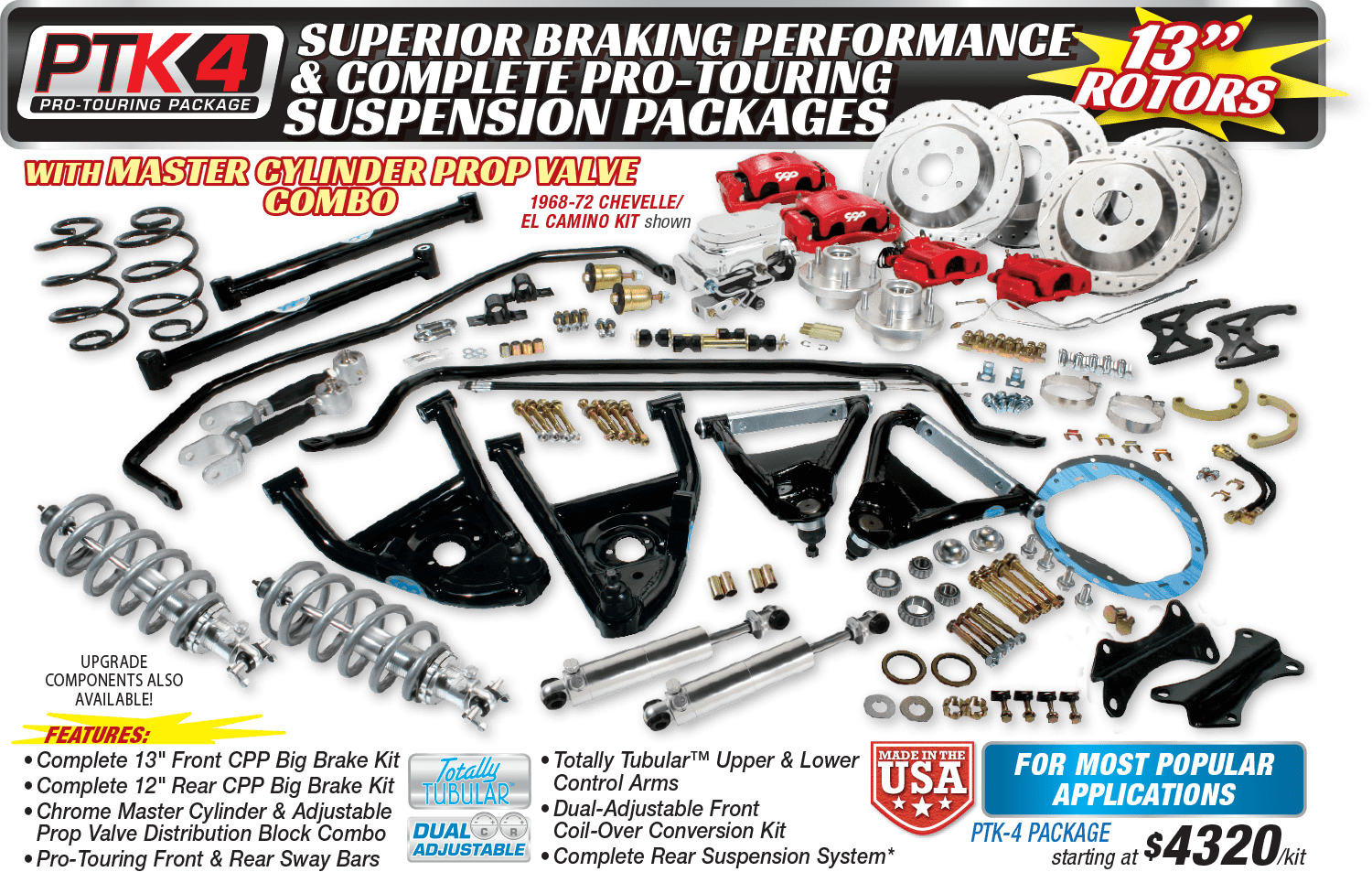
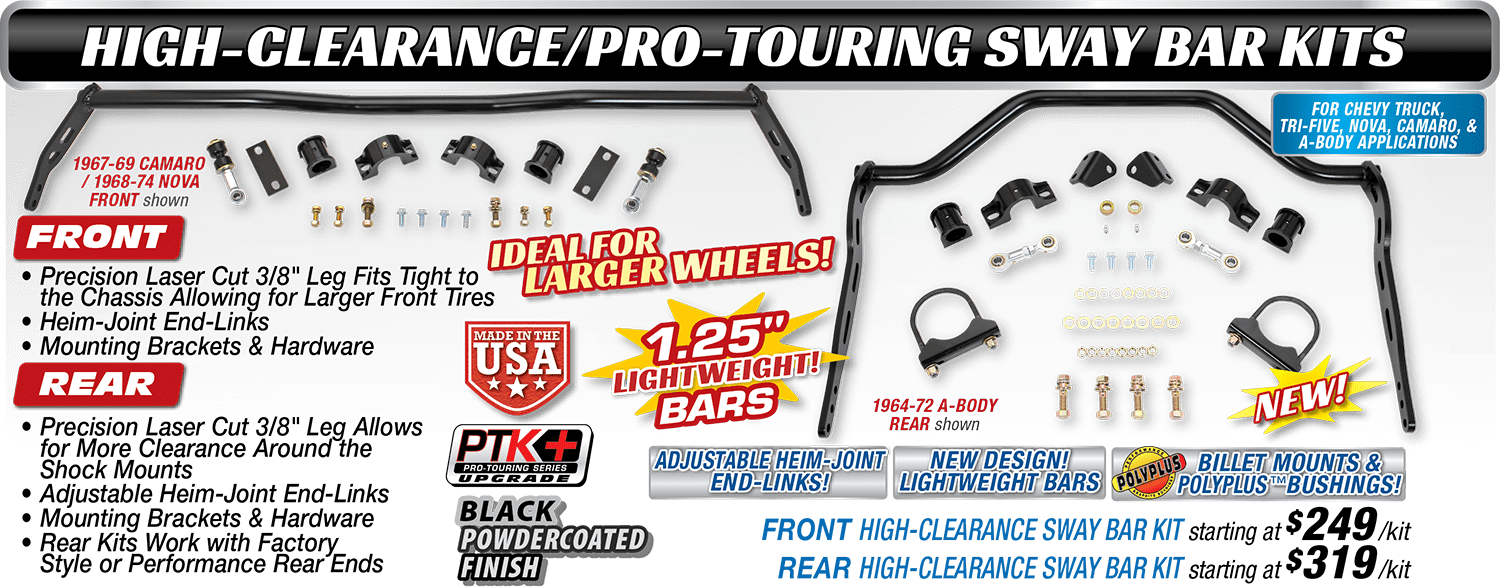

Wes Allison, “Rotten” Rodney Bauman, Shawn Brereton, Tommy Lee Byrd, Ron Ceridono, Grant Cox, John Gilbert, Tavis Highlander, Jeff Huneycutt, Barry Kluczyk, Scotty Lachenauer, Jason Lubken, John Machaqueiro, Ryan Manson, Jason Matthew, Josh Mishler, NotStock Photography, Todd Ryden, Jason Scudellari, Jeff Smith, Tim Sutton, Wes Taylor, and Chuck Vranas – Writers and Photographers
Travis Weeks Advertising Sales Manager
Patrick Walsh Sales Representative
ads@inthegaragemedia.com
AllChevyPerformance.com
ClassicTruckPerformance.com
ModernRodding.com
InTheGarageMedia.com
inthegaragemedia.com “Online Store”
For bulk back issues of 10 copies or more, contact store@inthegaragemedia.com
info@inthegaragemedia.com
Editorial contributions are welcomed but editors recommend that contributors query first. Contribution inquiries should first be emailed to info@inthegaragemedia.com. Do not mail via USPS as we assume no responsibility for loss or damage thereto. IN THE GARAGE MEDIA, INC. reserves the right to use material at its discretion, and we reserve the right to edit material to meet our requirements. Upon publication, payment will be made at our current rate, and that said, payment will cover author’s and contributor’s rights of the contribution. Contributors’ act of emailing contribution shall constitute and express warranty that material is original and no infringement on the rights of others.

Copyright (c) 2025 IN THE GARAGE MEDIA, INC.
PRINTED IN U.S.A.


Cleveland, OH
(216) 281-8777
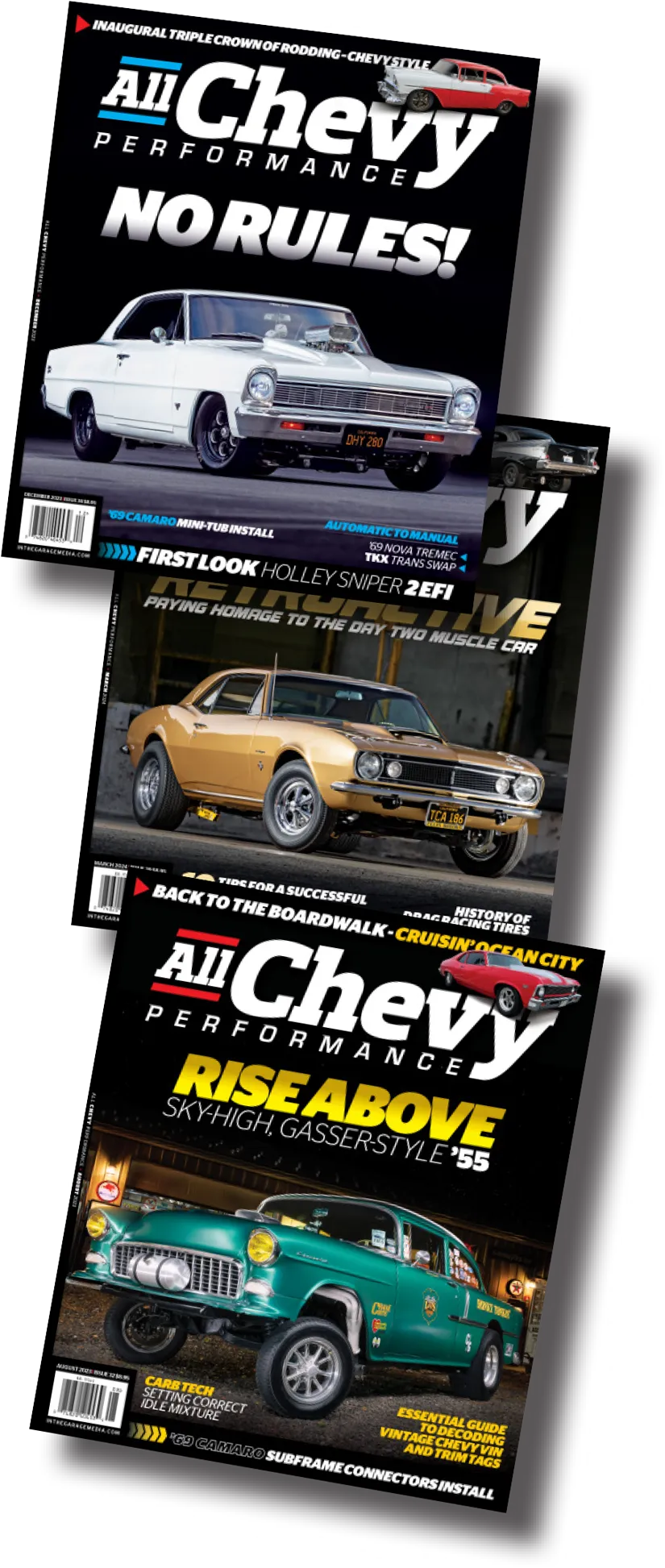
 firing up
firing up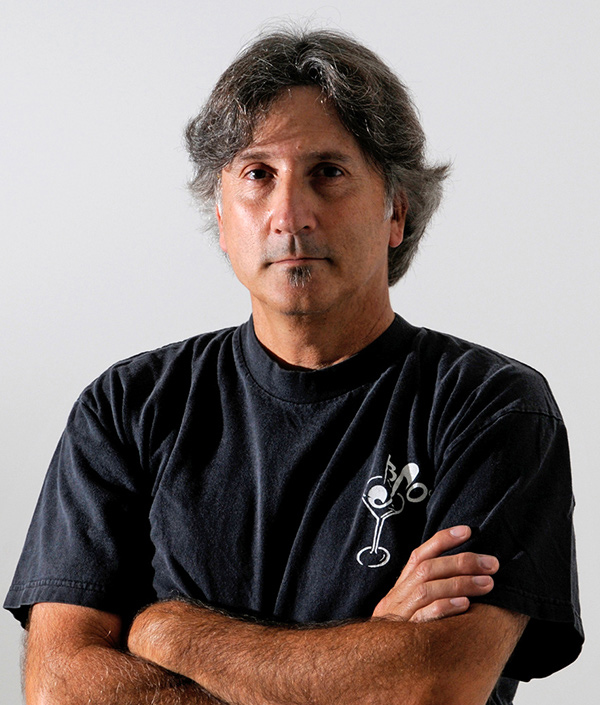
 BY NICK LICATA
BY NICK LICATA

hen I think of a classic car, my mind naturally harkens back to the late ’60s and early ’70s. But the general consensus defines a classic car as one that is at least 20-25 years old. I, for one, have a hard time referring to a car from the year 2000 as a classic. In my world any car from the 21st century falls under as new and still under warranty. It’s likely I feel that way because I graduated from high school in 1980 and refuse to accept that was 45 years ago. My kids regularly confirm with me, “that was a very long time ago.” Thanks, boys! Whatever. So, time has a way of taking some of us by surprise—doesn’t mean I have to mentally give in, although physically there is no denying it. With that said, I’m still not referring to a 1985 IROC Camaro as a classic, just because … and stay off my lawn!
OK, so a 1985 Camaro does happen to fall under the criteria of what some auto insurance companies consider to be a classic vehicle. While stewing over that, I proceeded to do an Internet search (what could possibly go wrong) to see what determines a car to be considered vintage. The good ol’ Internet delivered and informed me that cars built from 1919-1930 are referred to as vintage. I found it strange that there is a specific 11-year period for a car to be considered as such. Further digging down the “rabbit hole” I found out a car is considered antique if it is 45-plus years old. As previously mentioned, a car 20-25 years old is considered classic, and in continuing my deep dive, I learned a new term: Modern Classic. This consists of cars that are “post 1980 with value.” Hmmm. “With value” is very broad as value to one person could mean something totally different to another. But that’s the unique thing about this classic-vintage-antique-automotive hobby—everyone has their own idea of what’s cool, what’s not, or, in this case, what is considered valuable.
 PARTS BIN
PARTS BIN



 CHEVY CONCEPTS
CHEVY CONCEPTSInTheGarageMedia.com


 Text & Rendering by Tavis Highlander
Text & Rendering by Tavis Highlanderhevelles are hot these days. More and more of them keep finding their way into my project roster in the last few years. This one being built by Mountain Home Street Rods is keeping everything pretty straightforward and geared toward driveability. Mini-tubs allow for some wider tires mounted up to Forgeline AL307 wheels. Dirty gold centers and polished stepped lips flow with the rest of the body’s chrome trim. Dodge DelMonico Red will be the main color for the body with graphite stripes and gold pinstripe around those stripes to tie in with the wheels.
 FEATURE
FEATURE
 Images by THE AUTHOR
Images by THE AUTHORhen you hear the term “dream car,” what do you envision? While many of us would aimlessly shuffle through our top 10 makes and models when asked this question, someone like Chris Deppe of Orange, California, could respond right away with zero hesitation. The car of his dreams has always been a 1967 Chevy Nova SS. Chris’ love of cars started back in the 1980s when he was in high school. He has owned some incredible classics over the years, but it wasn’t until recently that he was able to secure his holy grail—thanks to his awesome wife, Erin.
Chris and Erin had a 1957 Chevy Task Force truck they would drive to local Orange County, California–based car shows. Erin began to pick up on the cars Chris would talk about and pay the most attention to. She even began noticing that he was searching daily through online car sites. It was obvious that he was after a ’67 Nova, mainly because it’s a timeless American muscle car, but also because Chris was born in 1967. Not one to let a perfect gift-giving opportunity pass her by, Erin figured out which exact listing Chris had his eye on. After she tracked it down, she bought the car for his 55th birthday. It was transported across the country from Saratoga, New York, to the Deppes’ driveway in sunny SoCal—just before he blew out his birthday candles.
 TECH
TECH
 Images BY THE AUTHOR
Images BY THE AUTHORocker arms are one of those component topics that don’t get their share of attention. For performance engines, there are some important considerations that might alter your perception of these simple devices. For this story we will focus on the small- and big-block Chevys as well as the LS powerplants. Over the years, the design of a basic rocker arm has evolved and, as you will see, for the better.
From the beginning in 1955, the small-block Chevy fell under scrutiny for its unusual stud-mounted stamped steel rocker arms. Until that point, most production engines with overhead valves relied on shaft-mounted rockers. An individual rocker mounted on a stud was less expensive to build and eventually spawned an industry.
 FEATURE
FEATURE
 Images by THE AUTHOR
Images by THE AUTHORinding rare and desirable cars often comes down to being in the right place at the right time. Knowing the right folks can also occasionally help move the needle forward in that quest. Over the years, John Fardone has been blessed with a combination of those elements in his pursuit to find desirable cars that help him score even better cars. “I’m always looking for the upgrade,” he points out. For him it has been a circular process that often yields true gems like his 1968 Camaro RS.
 TECH
TECH
1. This is the rear of the stock Camaro, and it’s about to undergo a major transformation.
Back Panel
 Images Courtesy of Roadster Shop
Images Courtesy of Roadster Shope have been following this unique 1968 Camaro build at Roadster Shop for a couple of installments. This time we’ll look at the tasteful modifications made to the rear of the car.
The first step was filling the gas cap opening and the hole for the decklid key. All the joints on the rear corners were finish-welded and smoothed at this time.
The fit of the rear bumper was tightened up against the body, and the holes for the original bumper bolts were filled. All the bumper surfaces were metalfinished at this stage.
There will be twin exhaust pipes exiting in the center of the car. The original license plate mount was removed and a new panel was formed with the cutout for the exhaust tips. The license plate was moved up a few inches, and the center of the rear bumper was removed. Portions of the removed bumper section were worked into a bullet shape, which will cap the cut ends of the bumper.
 FEATURE
FEATURE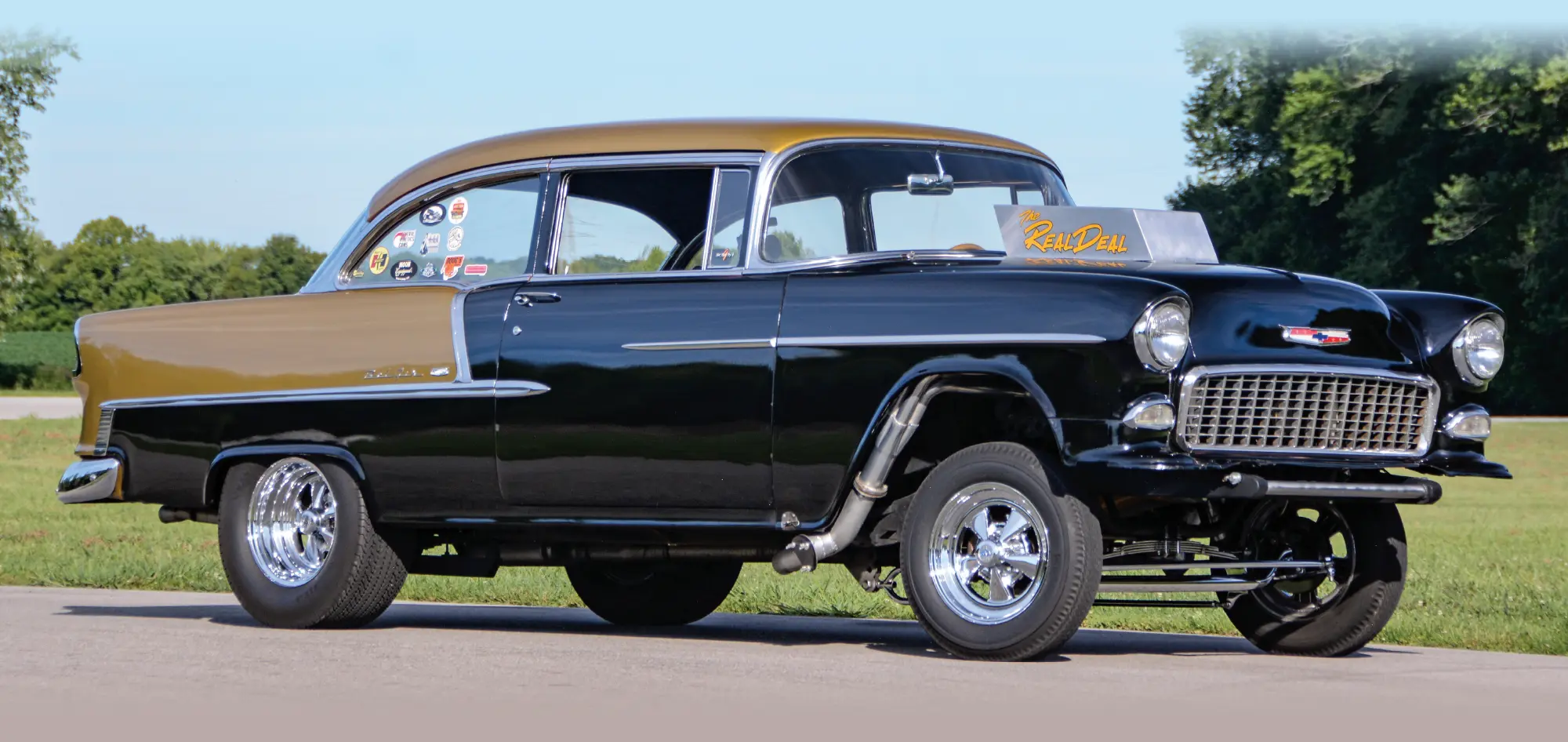
 Images BY THE AUTHOR
Images BY THE AUTHORhe cool factor of an old-school gasser is hard to ignore, and there are many ways to accomplish the look. You can go rough and rowdy, you can go full-on show car, or you can find a nice spot in-between. That’s where this 1955 Chevy Bel Air lands—it has all the old-school features you want, while still being highway friendly and capable of cruising the boulevard without fouling plugs, running hot, or getting too much attention from law enforcement. The car has some history as a hot rod, but you’ll find out that some of its most recent builds brought on much of the car’s current personality.
 TECH
TECH
 Images by THE AUTHOR
Images by THE AUTHORf you have not been studying the progression of alternator technologies, you may not realize that since 2010 GM has been using PWM-controlled alternators in many vehicles, and all 2014-up Gen V LT-series engines use them. This is not much of an issue if you have a factory-stock vehicle, but for LT swaps and modified factory Gen V–powered Chevys it can become a big issue.
This all started back in the mid 1990s when GM started using ECM-controlled alternators. The idea was to reduce engine load when it was not needed to increase fuel economy. By the time we got LS engines they were all ECM controlled. This is why you use a separate trigger wire and resistor on the alternator for Gen III LS swaps. Gen IV/V alternators are different. These are PWM-controlled, they receive a signal from the ECM that not only turns on the charging but also changes the voltage at which the alternator outputs from 11 to 15.5 V.
The issues are twofold. First, the factory components are designed to work with the varying voltages, but many aftermarket components operate best at 14.4 V; anything lower causes problems. For example, fuel pumps may run slower, delivering lower fuel pressures, cooling fans may spin slower, electronics such as controllers and car audio may show odd behaviors.
 FEATURE
FEATURE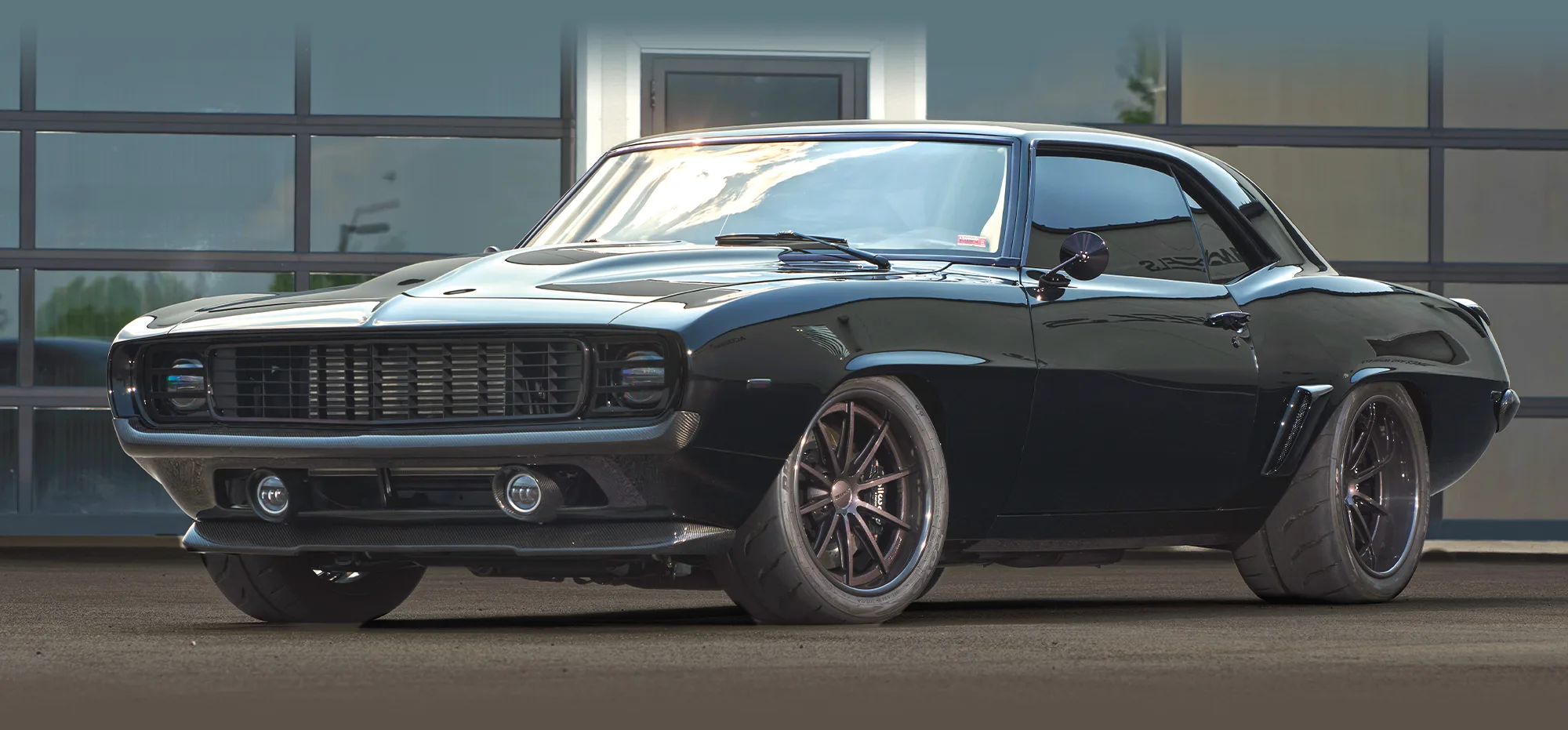
 Images by NotStock Photography
Images by NotStock Photographyhh, the 1969 Camaro. It’s a car that features a sleek design and bold body lines that make it timeless well over 50 years after it first rolled off the assembly line. The car looks fast even while sitting still. That’s quite an achievement five decades later. There is no other vintage vehicle quite like it. The 1969 Camaro remains unsusceptible to trends and has the personality that makes it conducive to just about every build style—Pro Touring, Pro Street, Day Two, drag racers, street machine, lowrider, and even going gasser style should one want to go that route. We’ve even seen a ’69 Camaro built as an off-road vehicle with four-wheel drive and big, gnarly trail-ready tires.
Charlie Beis’ love for the first-gen Camaro started back in 1998 when he was just 16 years old. The Eureka, Missouri, resident has been spinning wrenches on cars since he was just 15, as he started out helping his dad work on and restore his own car. The first-gen Camaro was his first ride and has been his favorite muscle car ever since.
 TECH
TECH
 Images BY THE AUTHOR
Images BY THE AUTHORat Musi made his bones building top-flight engines for drag racing. Drivers running Musi engines have won championships in numerous classes, but the engine builder is most famous for his nitrous-huffing big-blocks.
Musi has been in business since 1970, and almost exclusively building ultra-competitive competition engines the whole time. But that’s changed recently. Thanks to a partnership with Edelbrock you can now purchase a genuine Pat Musi Racing Engines big-block Chevrolet, perfect for hot street performance or even drag racing. Maybe best of all, because of the partnership, the engines can be had for a real steal. There are currently three versions, and as this went to press the lowest cost carbureted engine could be had for less than $19,000, while the most expensive EFI big-block comes in for just about $3,000 more.
 FEATURE
FEATURE
 Images by THE AUTHOR
Images by THE AUTHORuscle car lovers find their dream rides in all sorts of ways. Maybe it was through an online want ad or Internet site (which has now become the norm). It was possibly discovered by attending an auction, estate sale, or even by passing it parked along the roadside or at a car cruise with a For Sale sign in the window. There’s also the hand-me-down scenario—a family possession that somehow made its way to a friend or relative’s garage. That’s always a plus.
Joe Horne of Glen Mills, Pennsylvania, found his special ride in a much different way. “This 1965 Nova SS was owned by my good friend Kevin Gildea. For years I stored the car in my garage for him because he didn’t have the room at his place,” Joe tells. “I used to walk by it daily and ask myself ‘What would I do to it if it were mine?’ Finally, one day I broke down and asked him if I could buy it off him, and Gildea surprisingly said ‘Yes.’ Before I knew what happened, it was a done deal.”

 EVENT
EVENT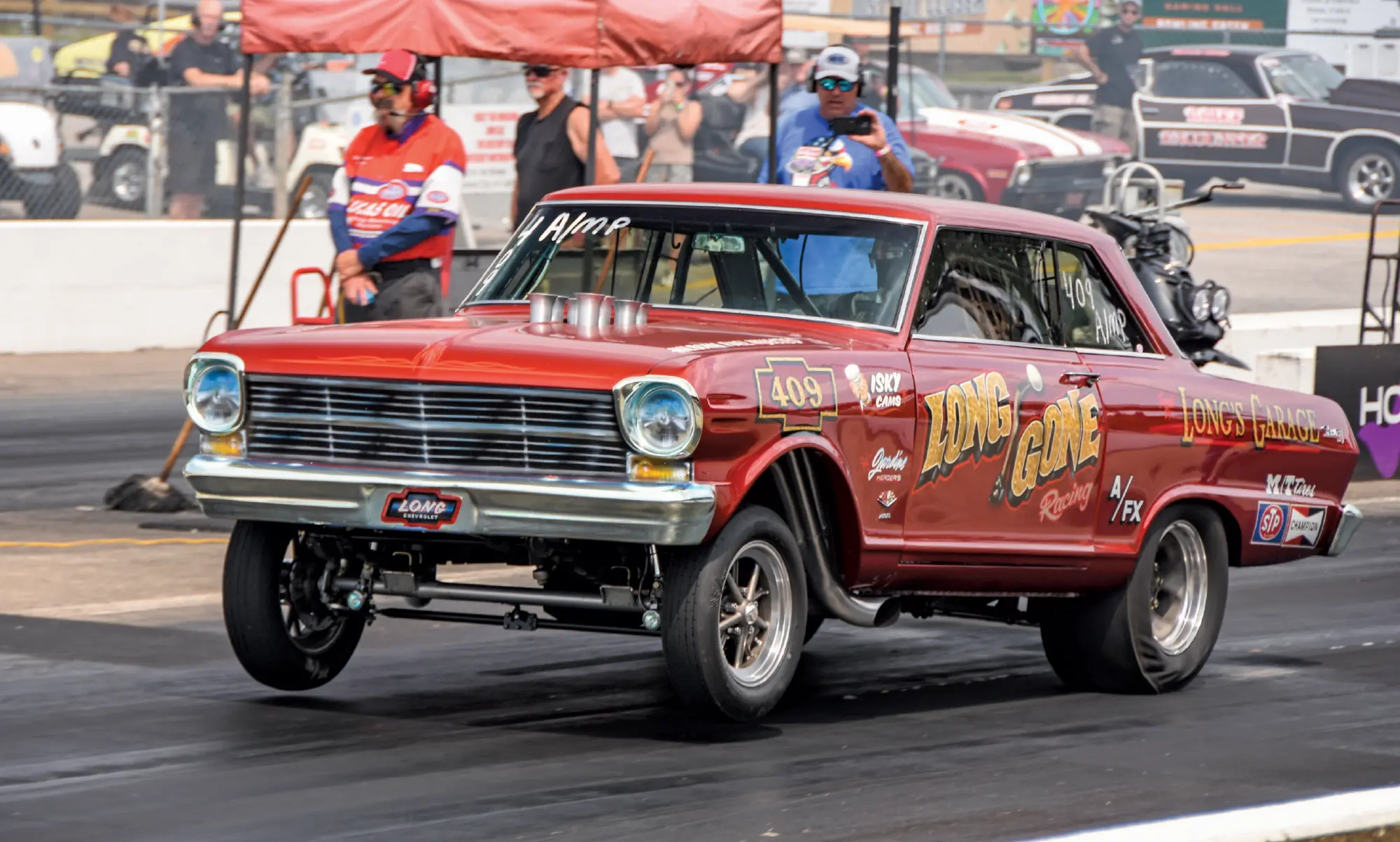

Paying Homage to Drag Racing History in Bowling Green
 Images by THE AUTHOR
Images by THE AUTHORf you’re a fan of nostalgia drag racing, you’re likely already familiar with the Wally Parks NHRA Nostalgia Nationals, formerly known as the Hot Rod Reunion. The idea for this event was born in the early ’90s, as the first California Hot Rod Reunion took place in 1992. Eleven years later, the NHRA took the event east of the Mississippi, choosing Beech Bend Raceway to honor the legends of drag racing. Now, more than 20 years after its inception, the event continues to take over Bowling Green, Kentucky, every Father’s Day weekend.
The month of June offers unpredictable weather in Kentucky, and it seems the low-lying Beech Bend facility has a weather pattern all its own. The one certainty is humid conditions that make an 80-degree day feel like 95. This year, the event had favorable weather on Thursday, but showers came in on Friday and Saturday that threw a wrench in everyone’s plans. Even still, there was a nice turnout of cars in the show-and-shine area and hundreds of cars throughout the drag racing pits. The variety in the pits covers the entire spectrum, including nitro-burning dragsters and fuel altereds, sky-high gassers in the Straight Axle Mafia, stick-shift cars in Modified Production, and many other index classes. With a multitude of classes, including a group of Nostalgia Pro Stock cars, the dragstrip is always hot with action when the weather allows.
Advertiser
- American Autowire45
- Art Morrison Enterprises31
- Auto Metal Direct39
- Automotive Racing Products11
- Borgeson Universal Co.29
- Classic Industries47
- Classic Performance Products4-5, 89, 92
- Dakota Digital91
- FiTech EFI77
- Forgeline Motorsports73
- Golden Star Classic Auto Parts7
- Goodguys Rod & Custom Association61
- Heidts Suspension Systems73
- Hemmings59
- Lokar2
- National Street Rod Association67
- Powermaster Performance87
- Rod Shows57
- Schwartz Performance89
- Scott’s Hotrods77
- Speedtech Performance USA87
- Steele Rubber Products9
- That’s Great News89
- Tuff Stuff Performance Accessories69
- Vintage Air6
- Wilwood Engineering13










